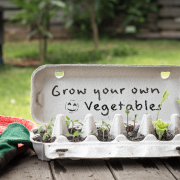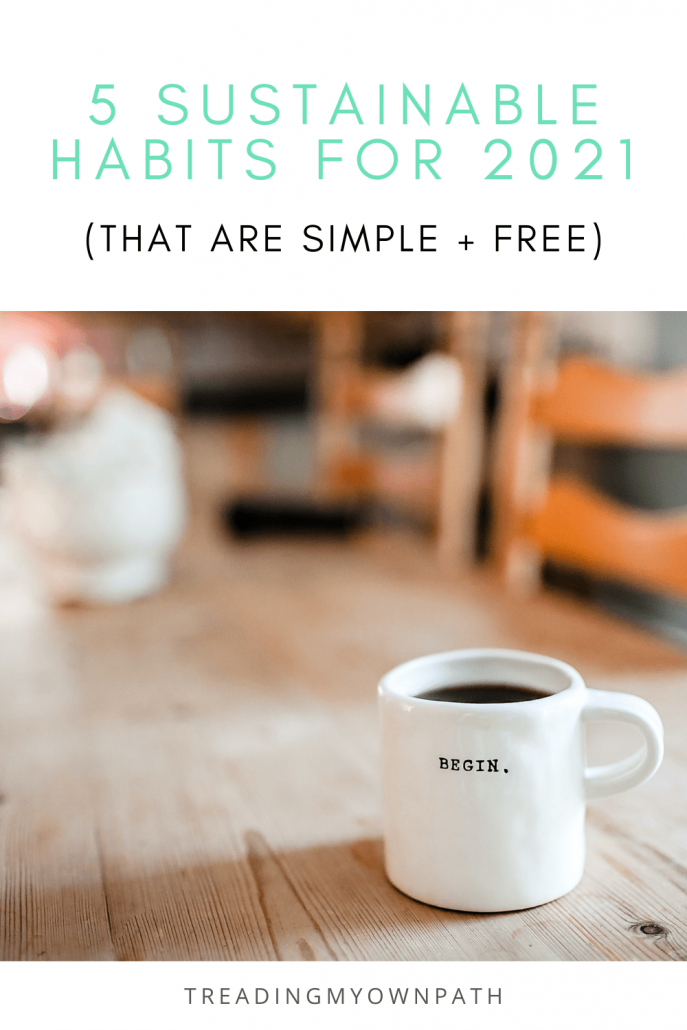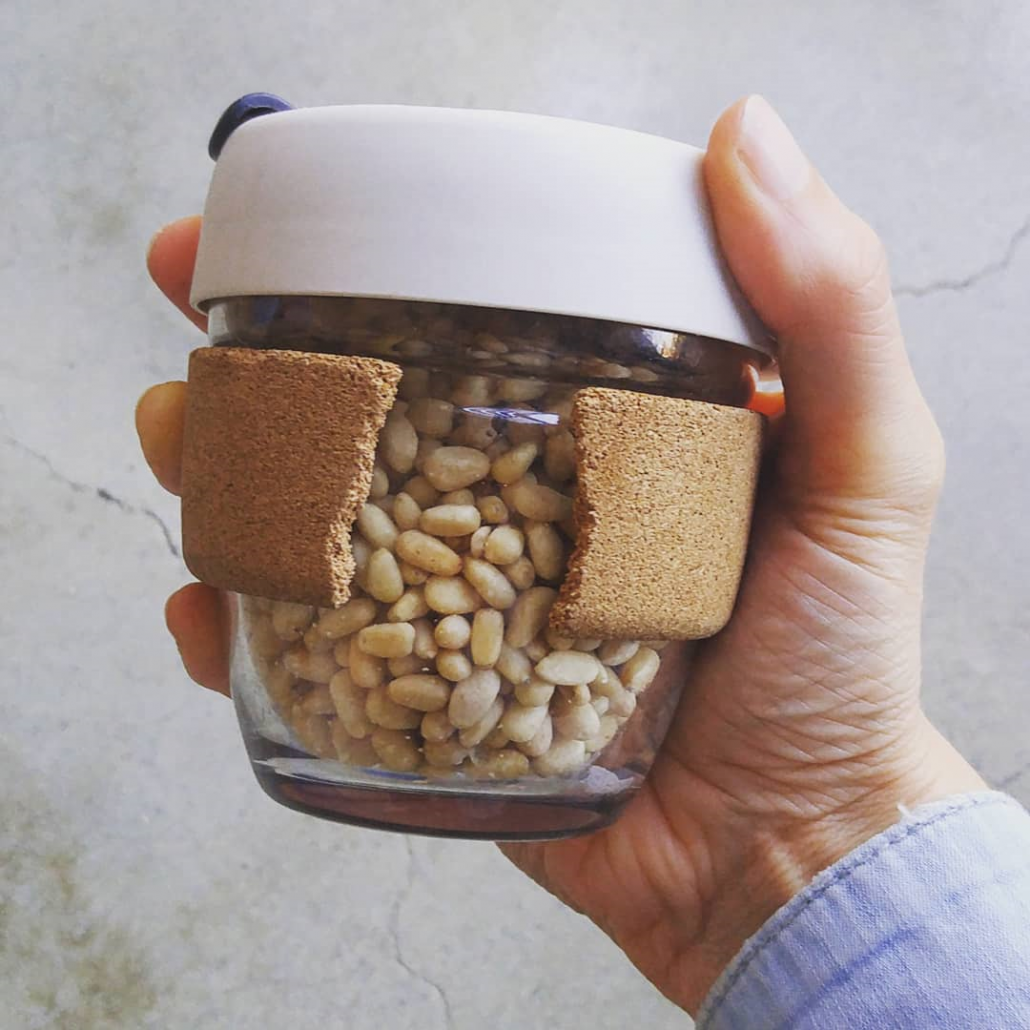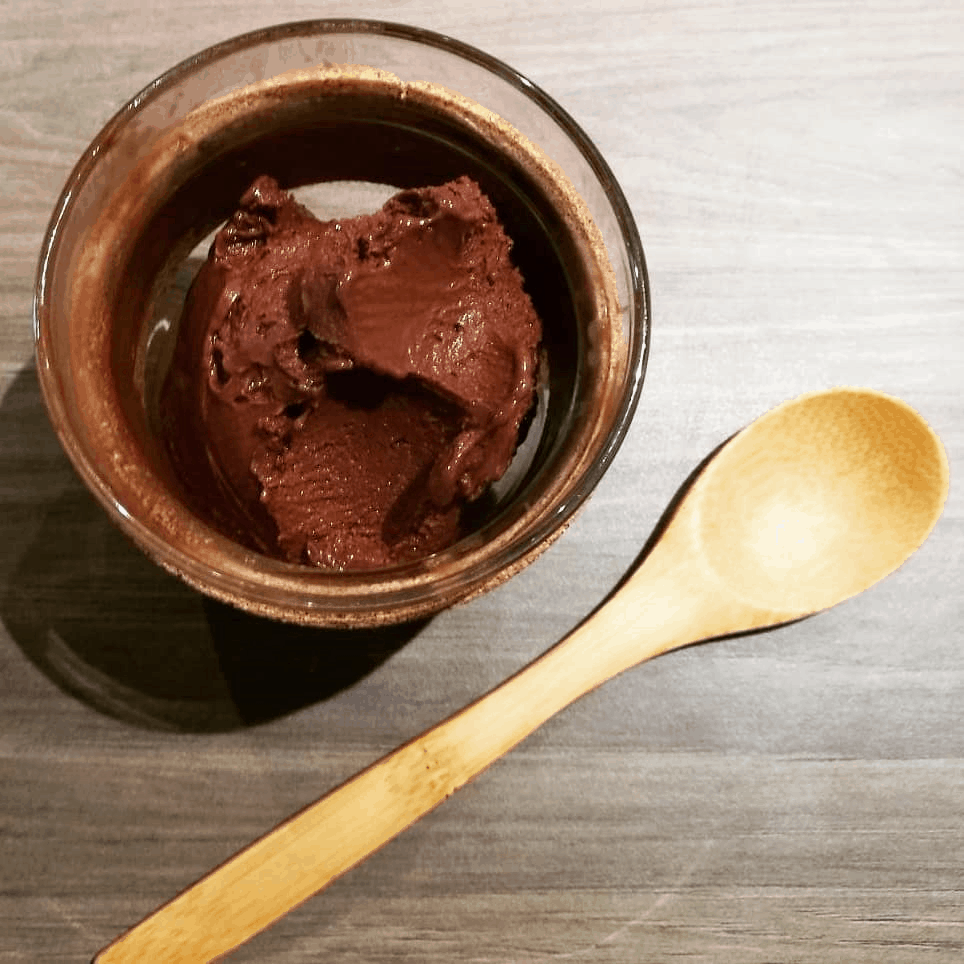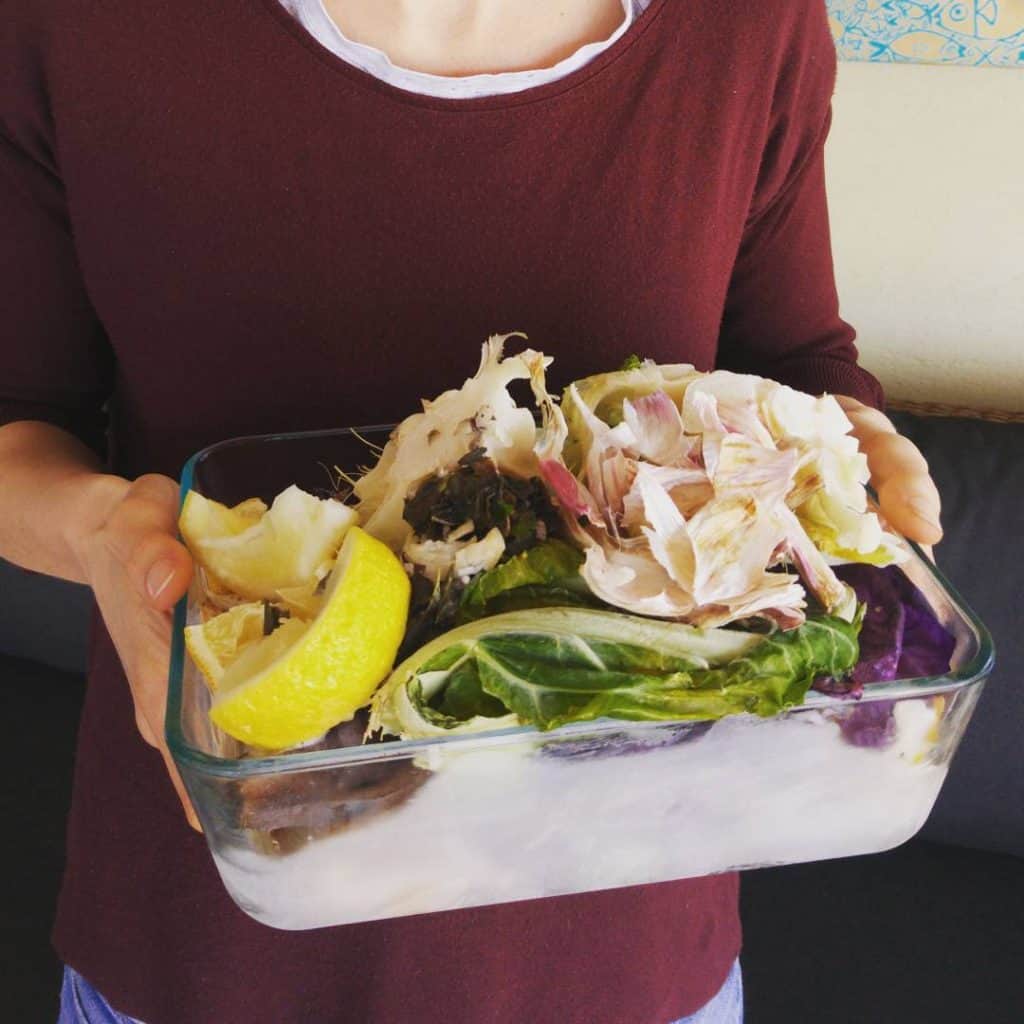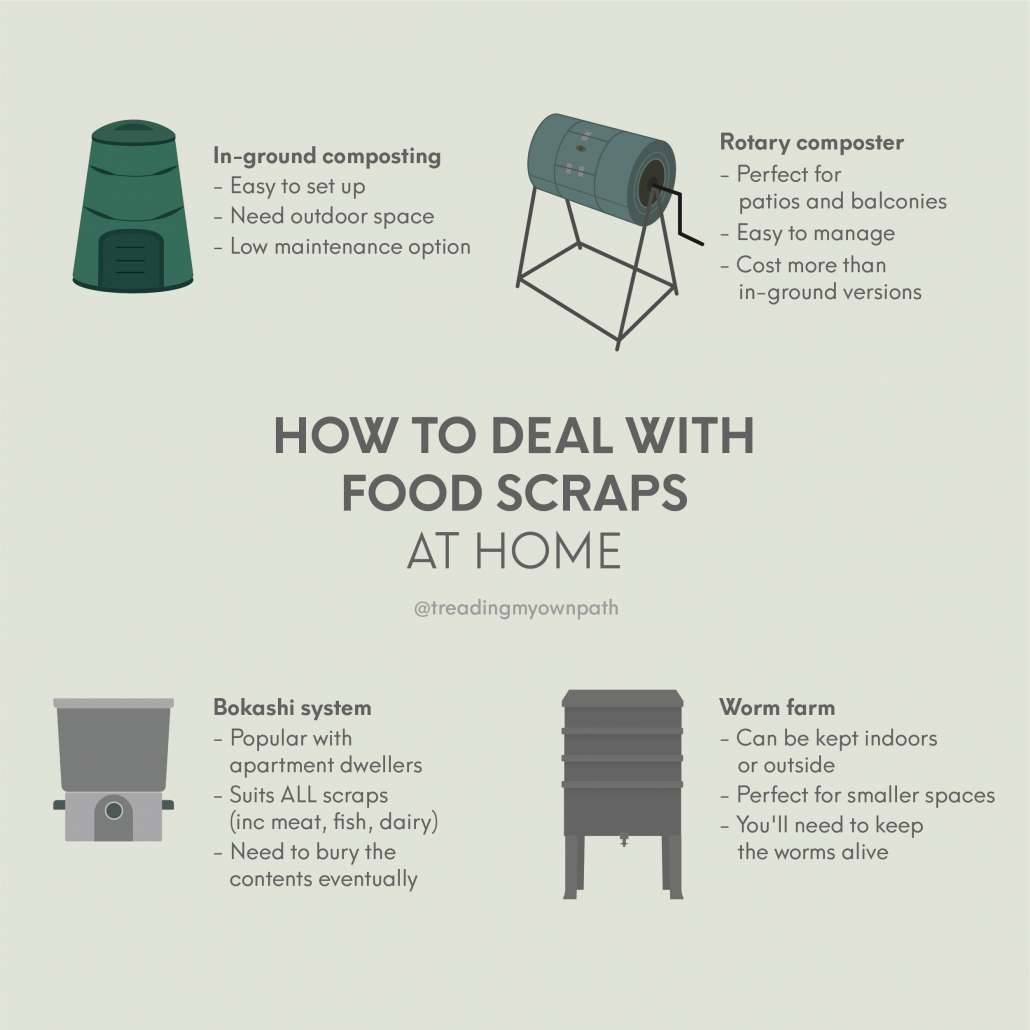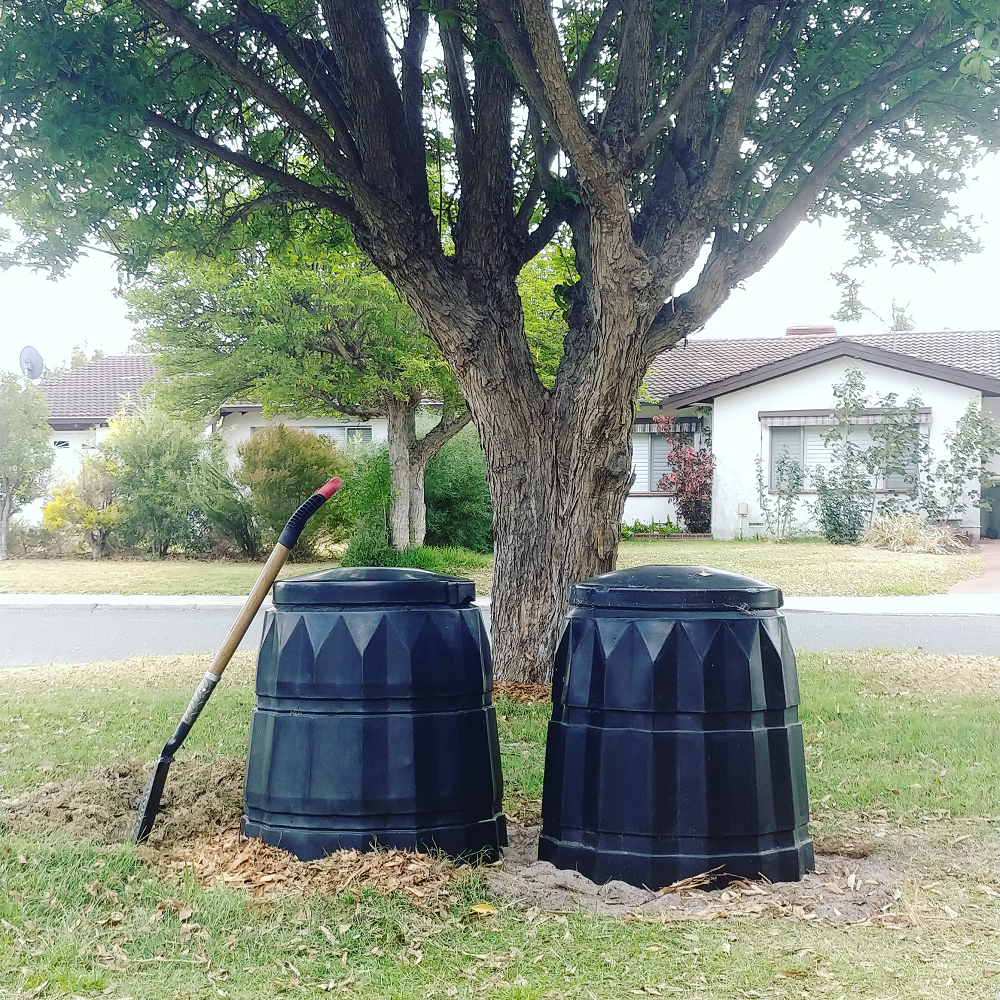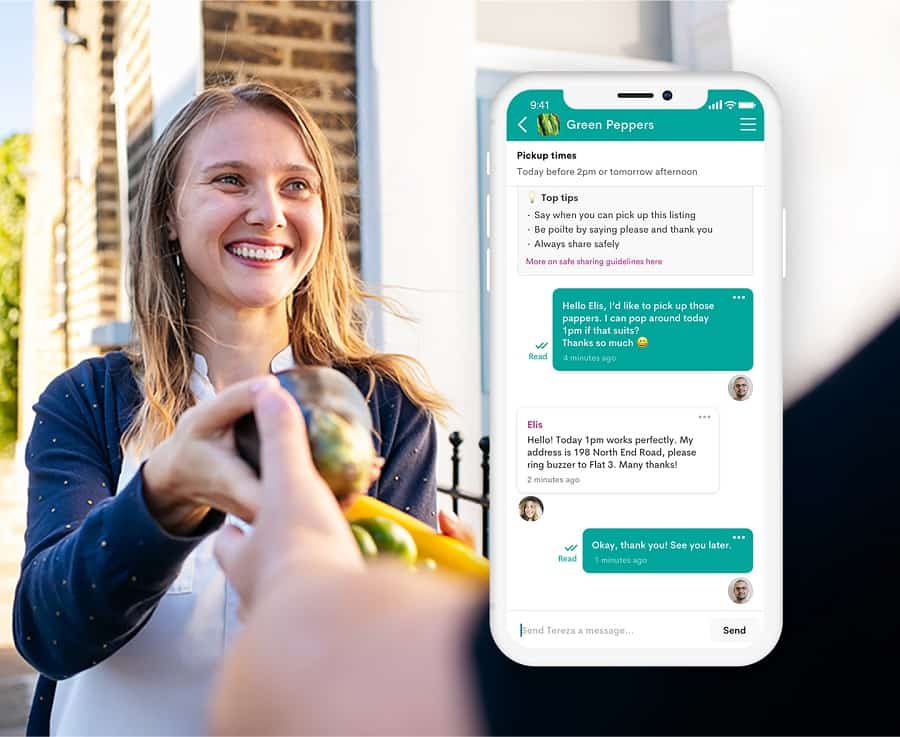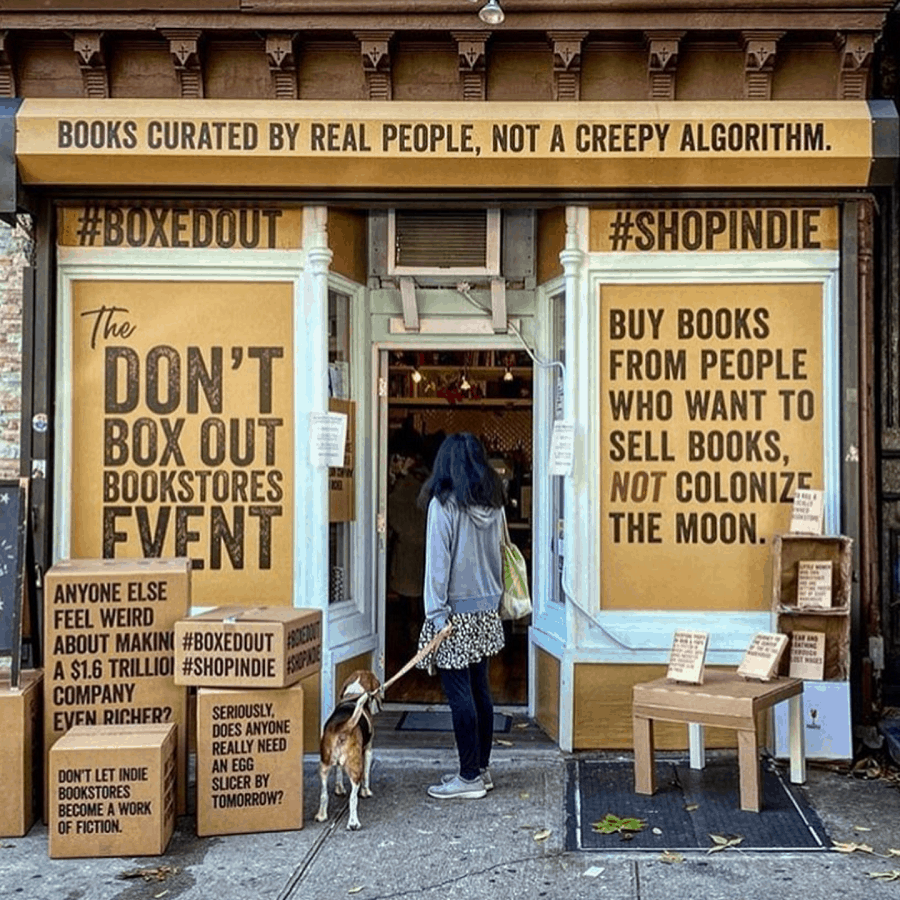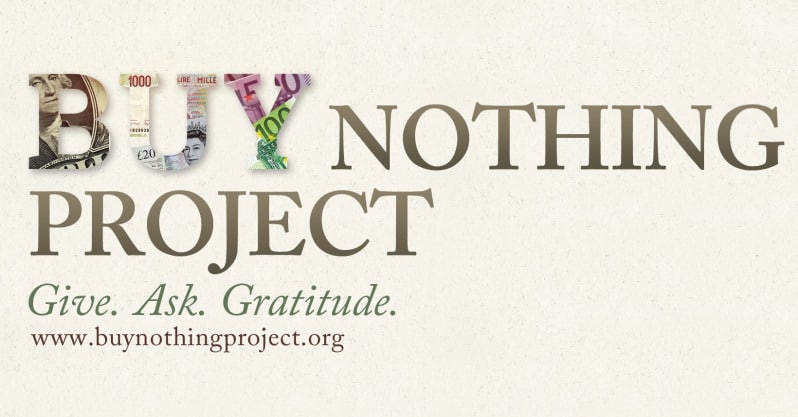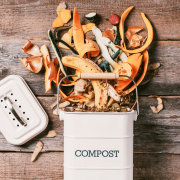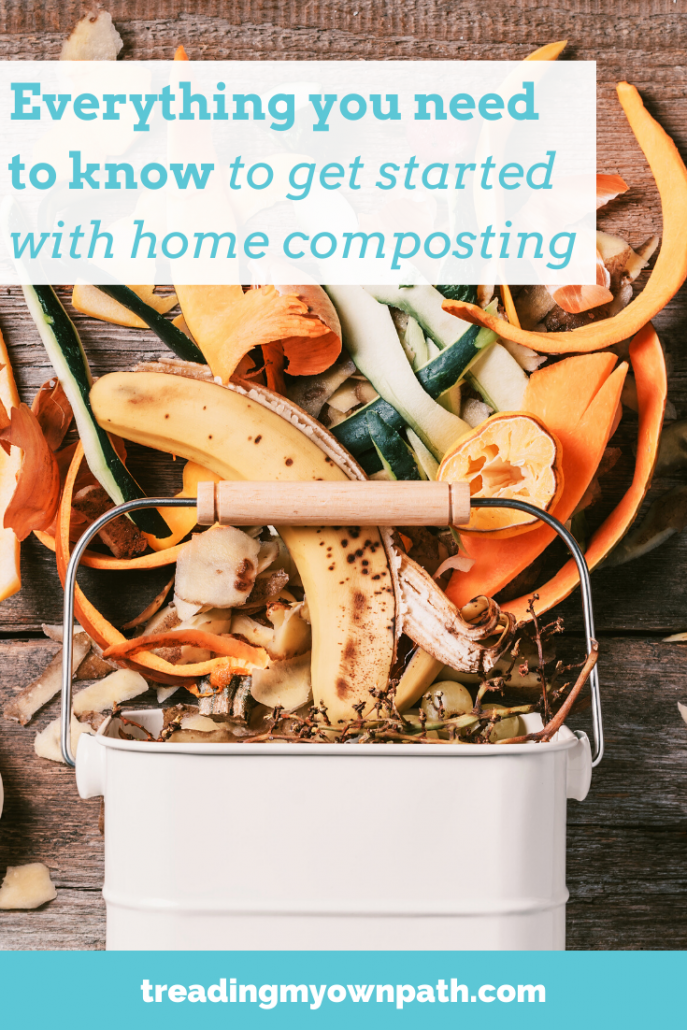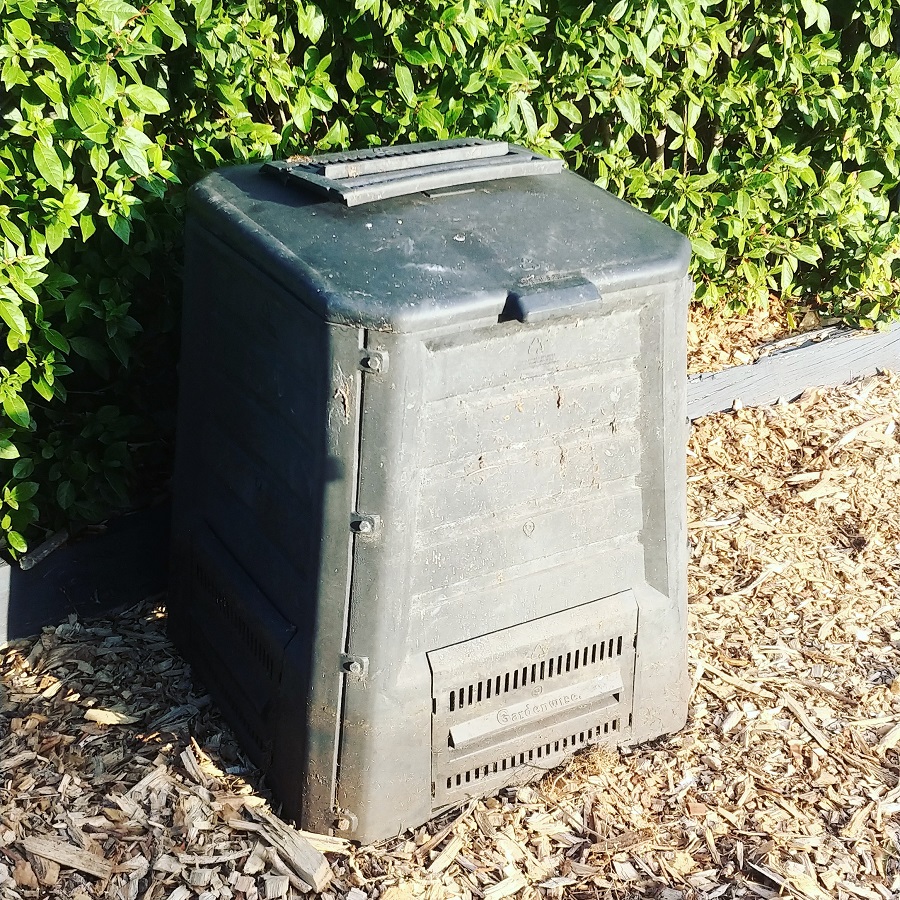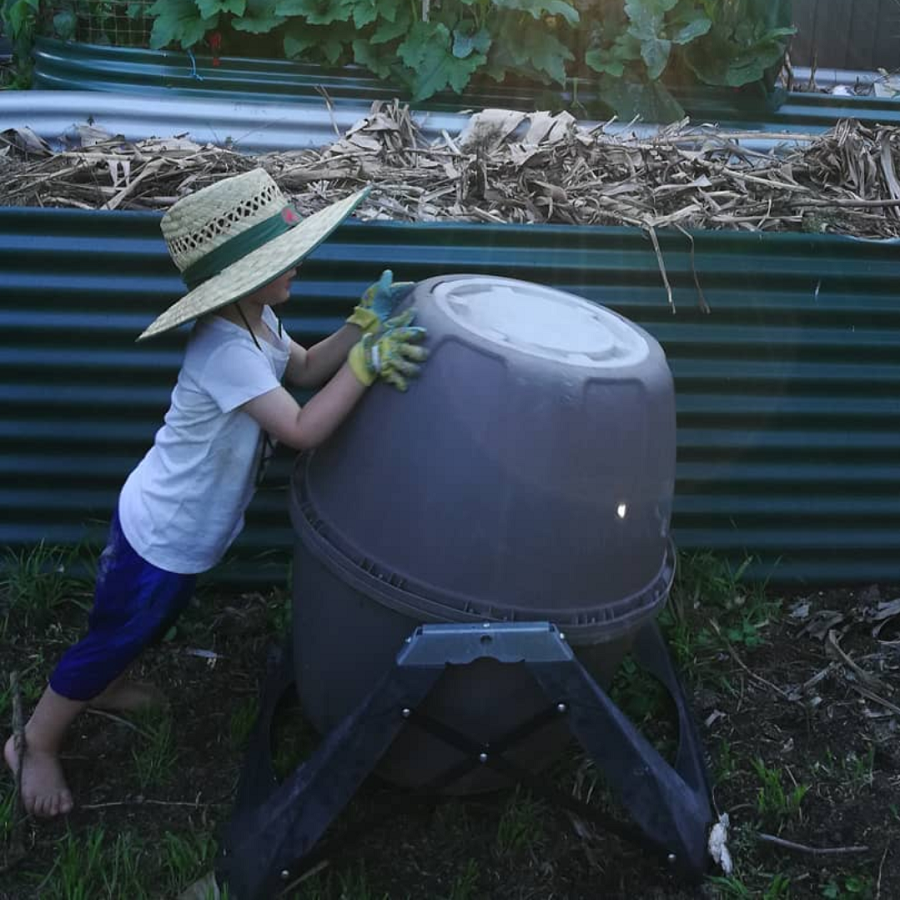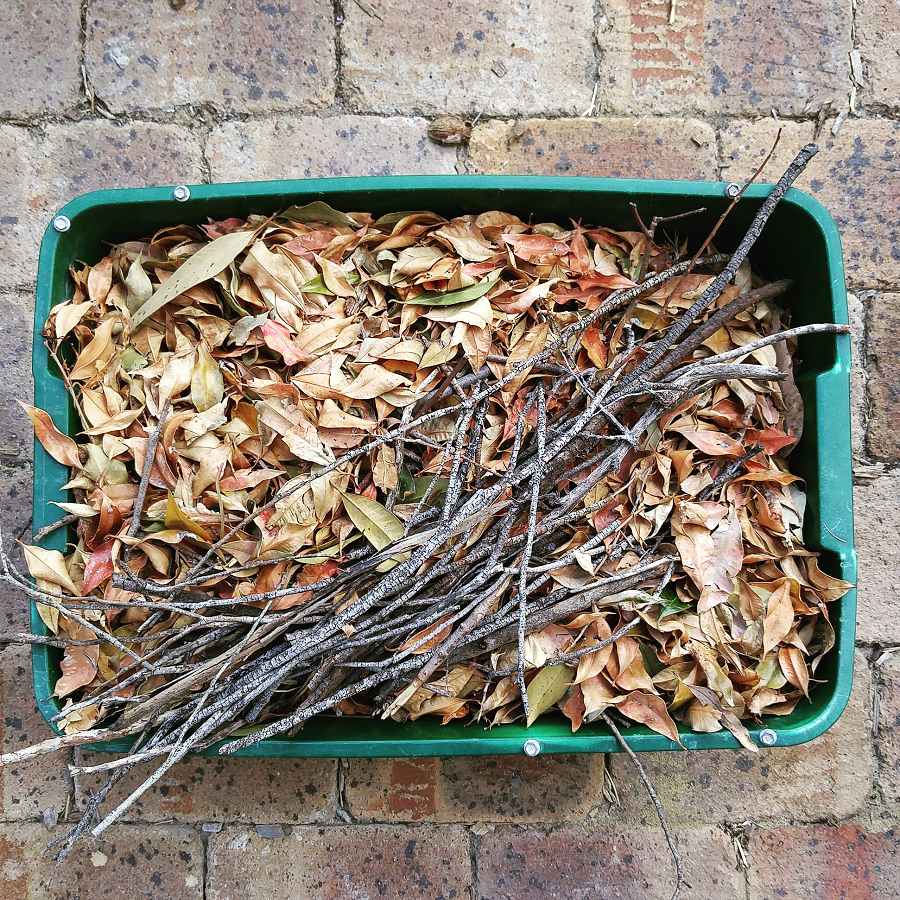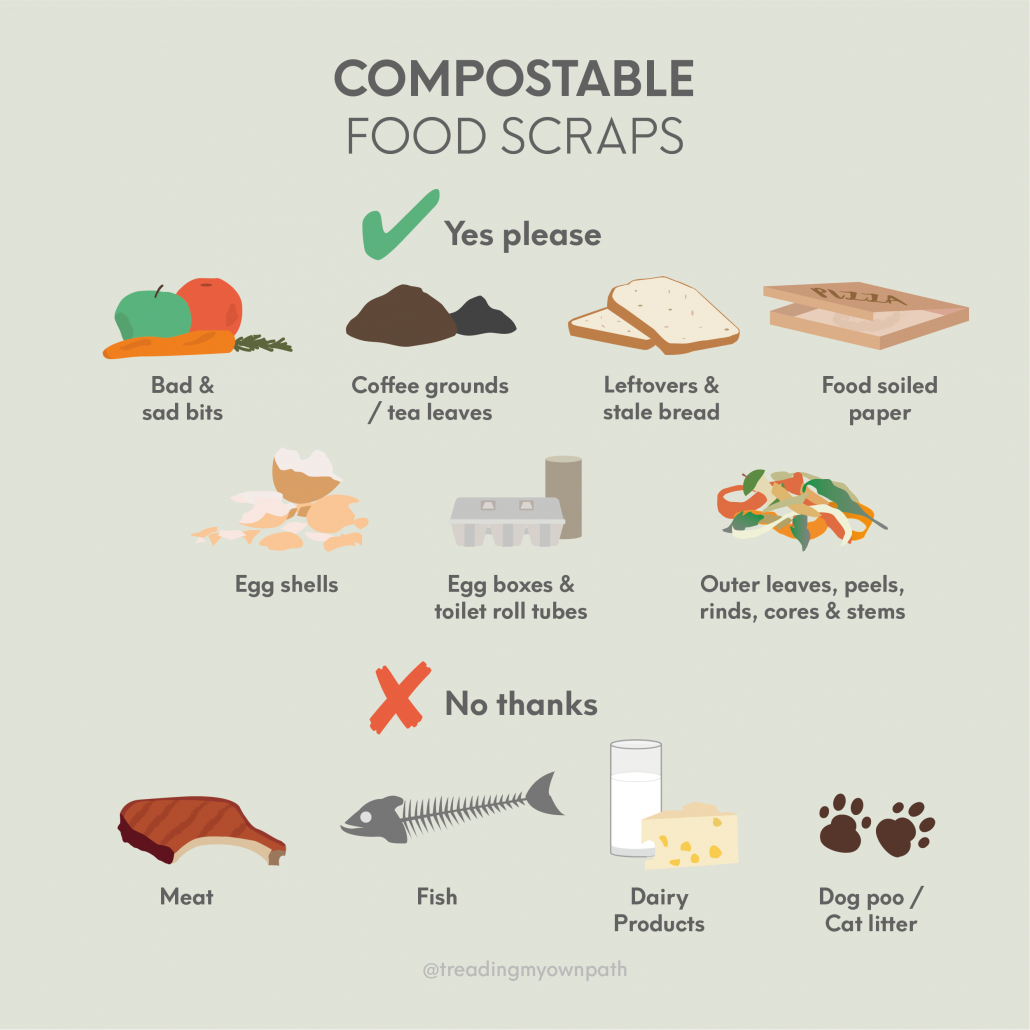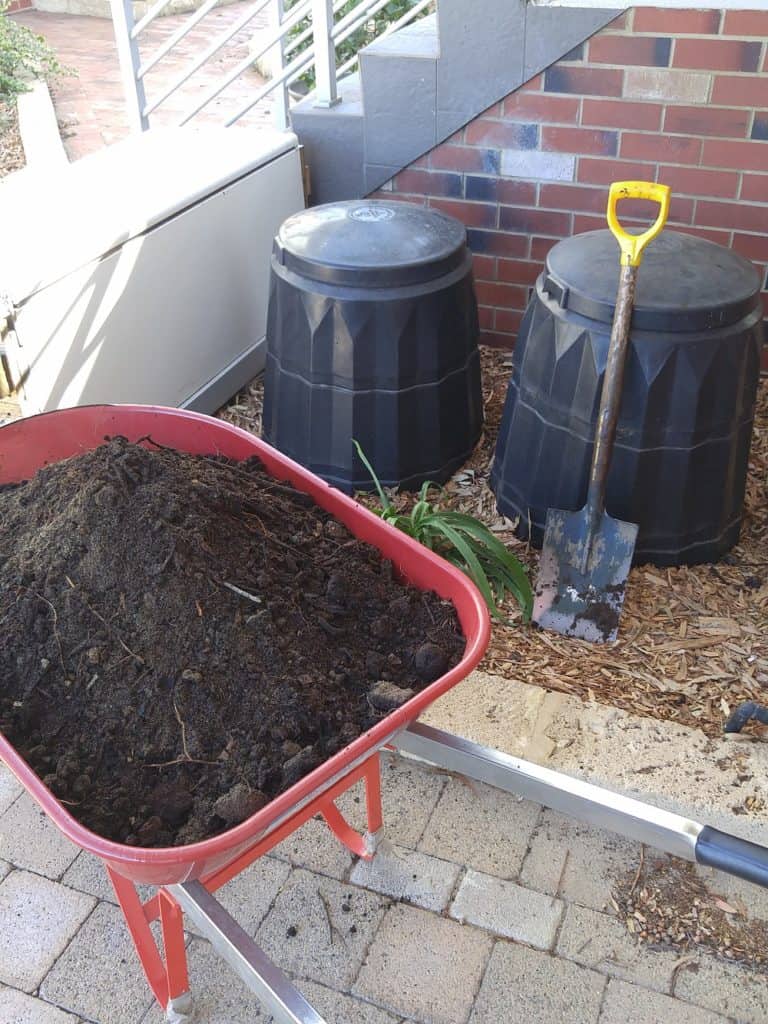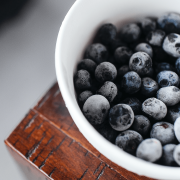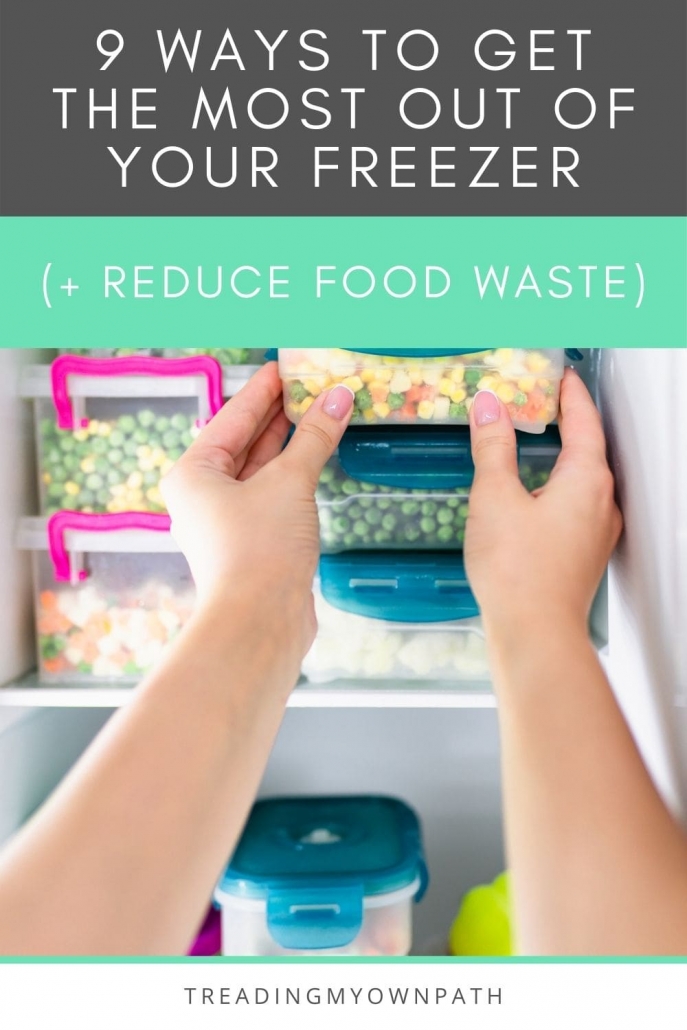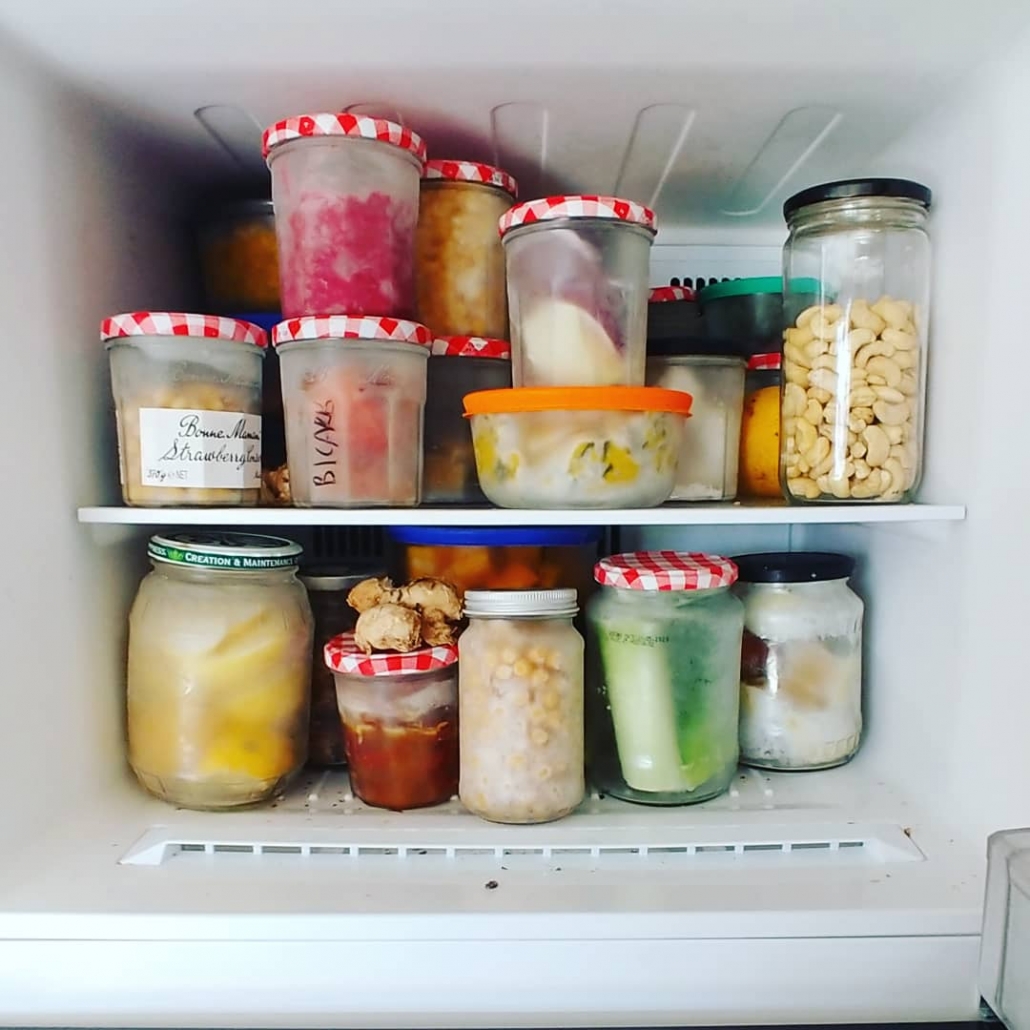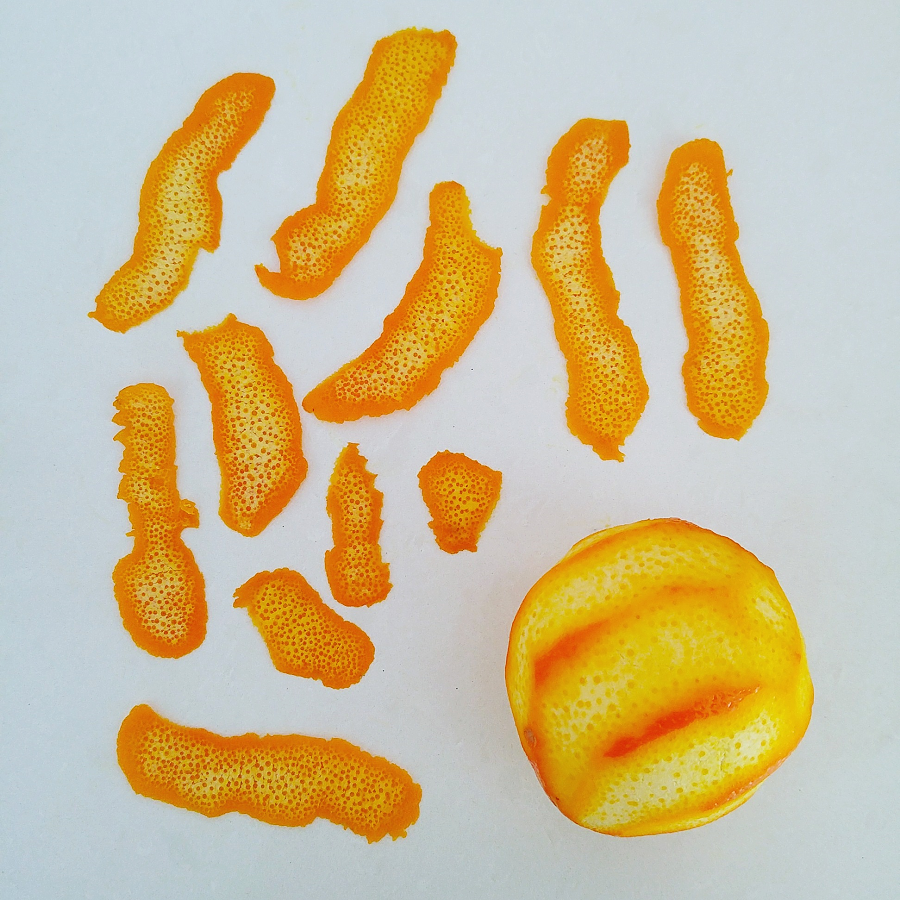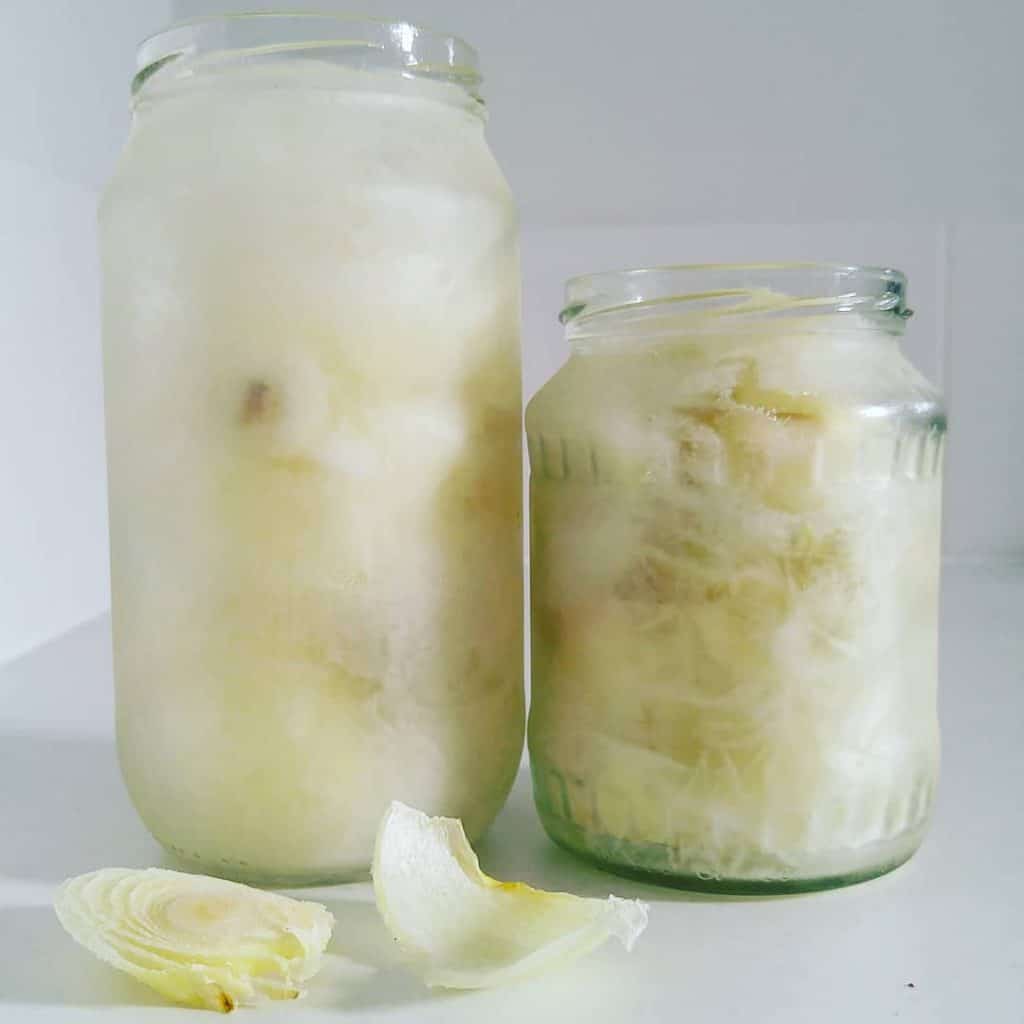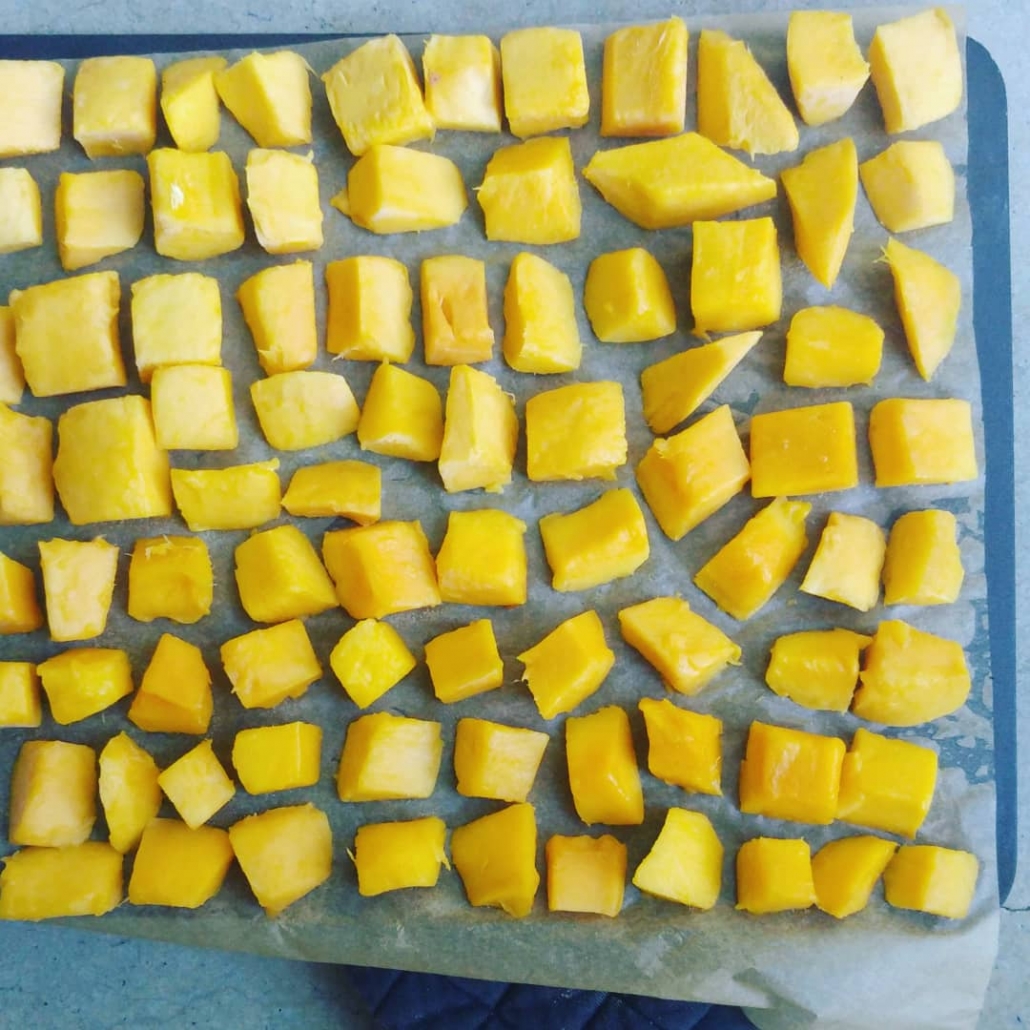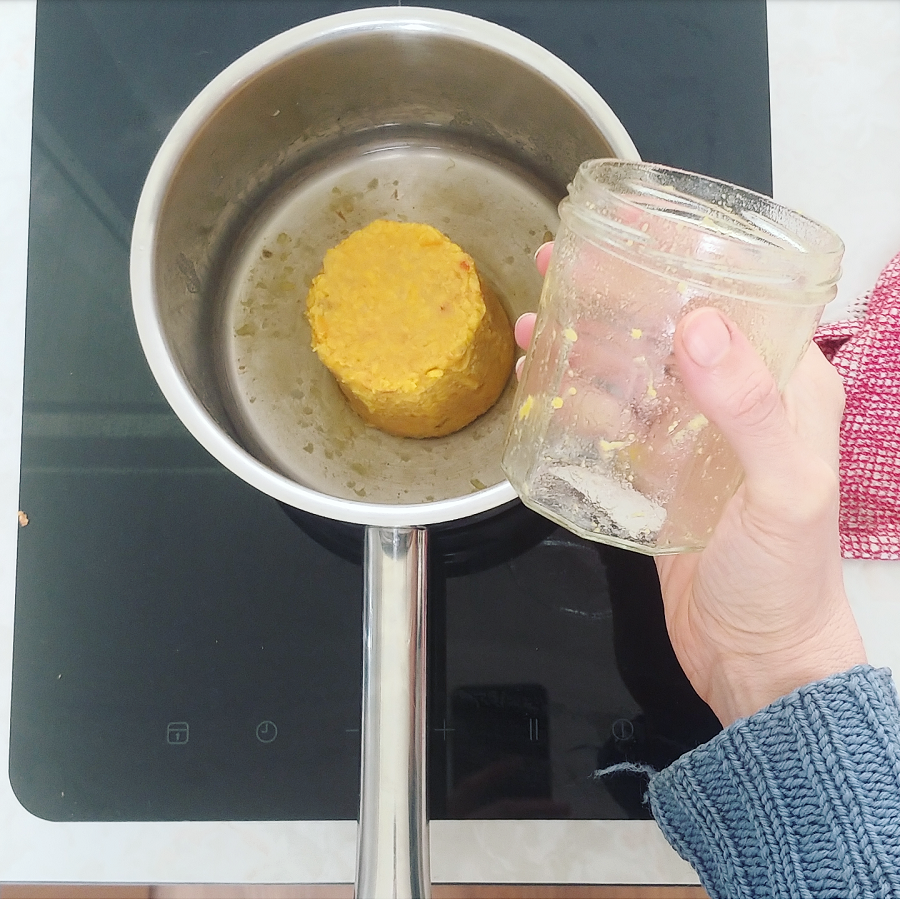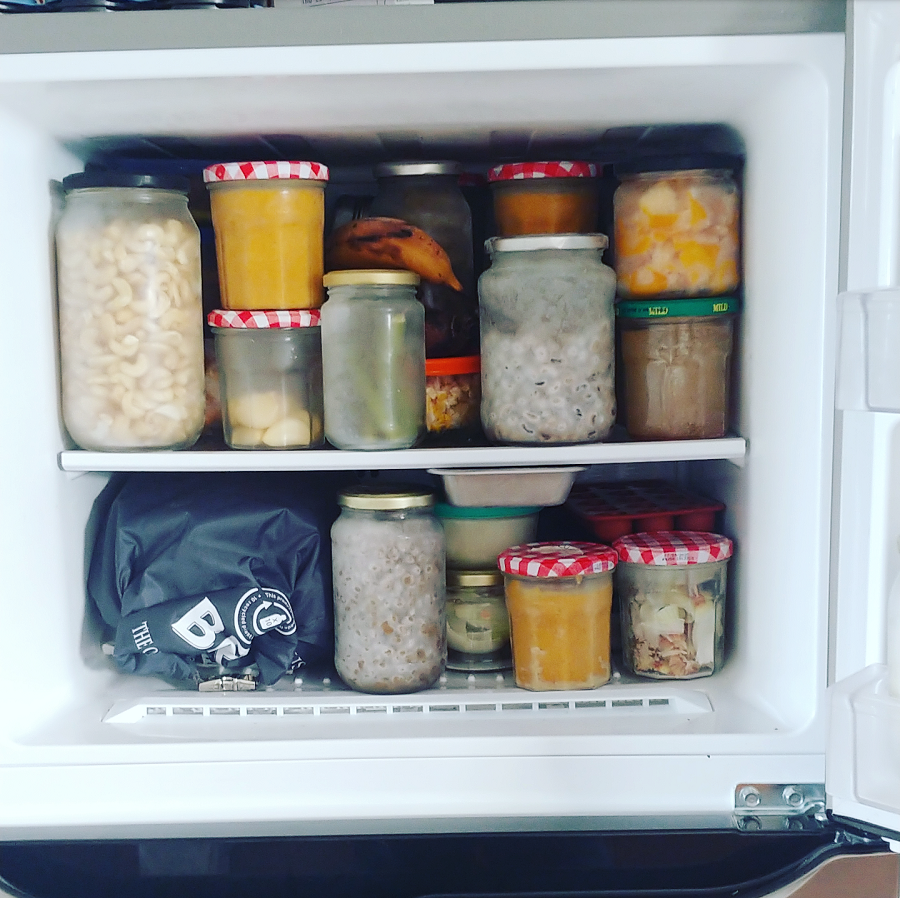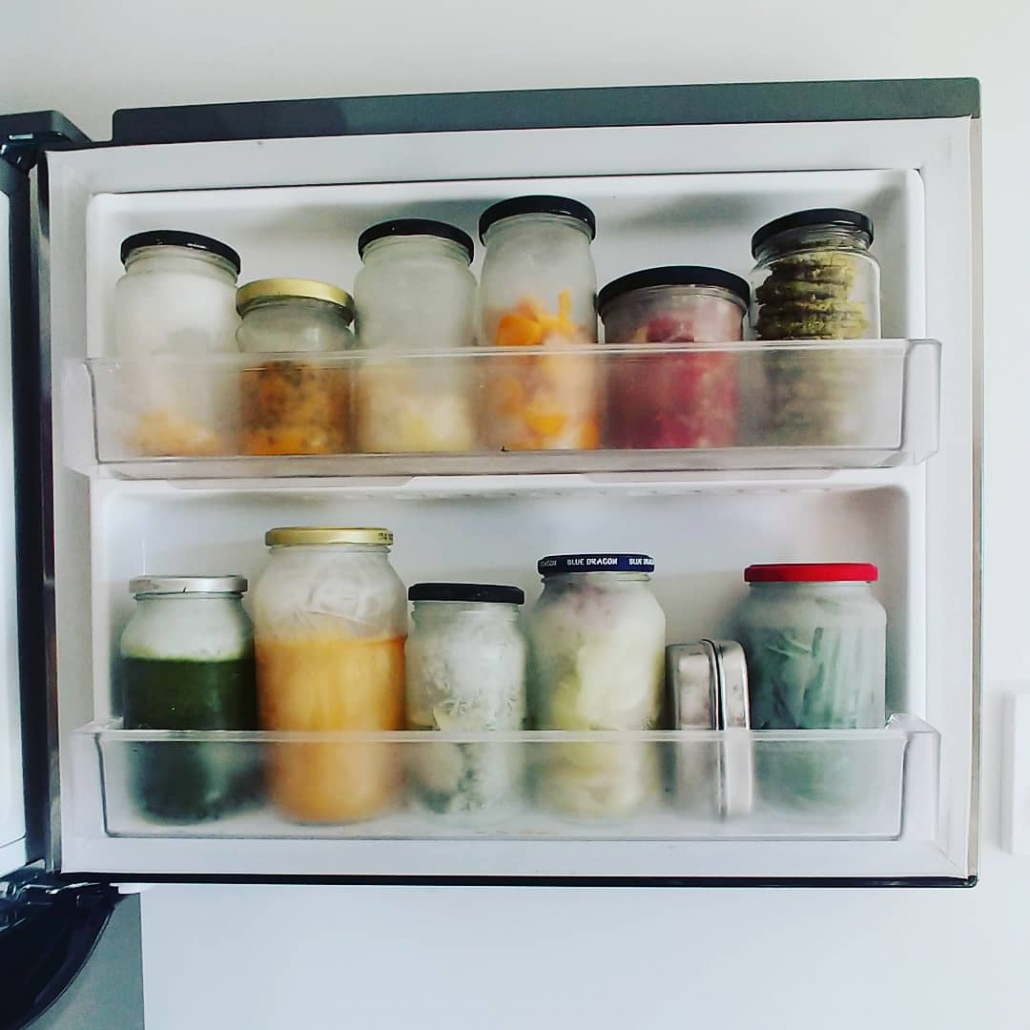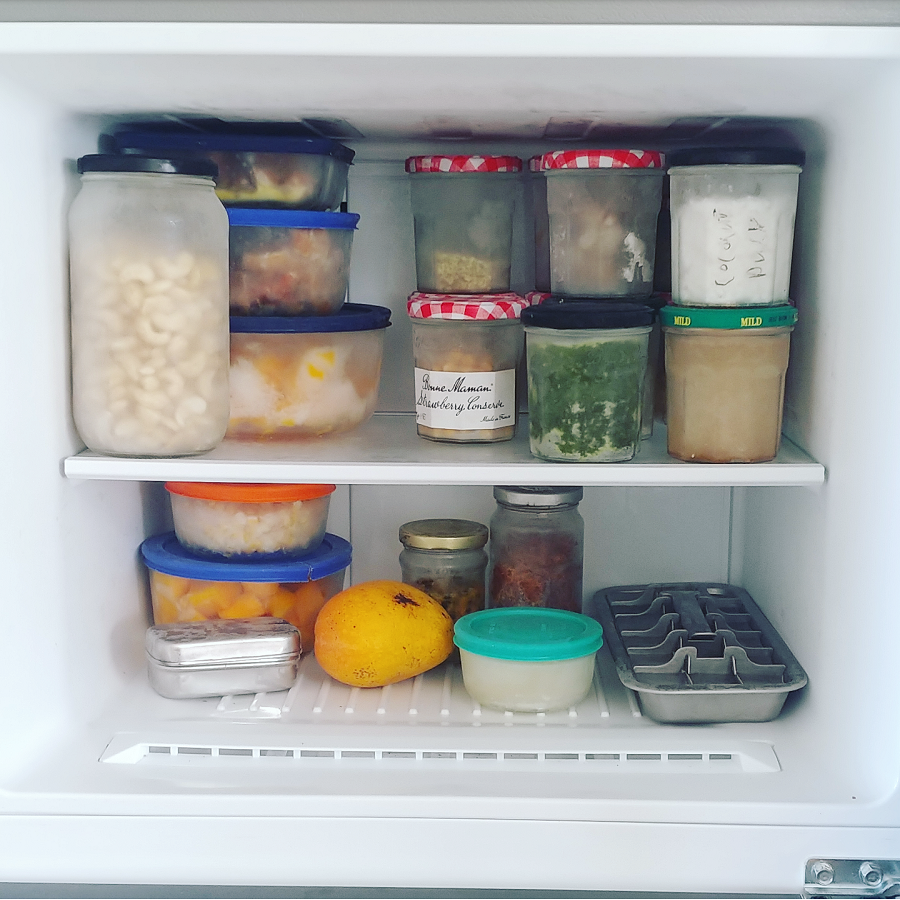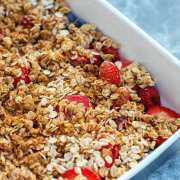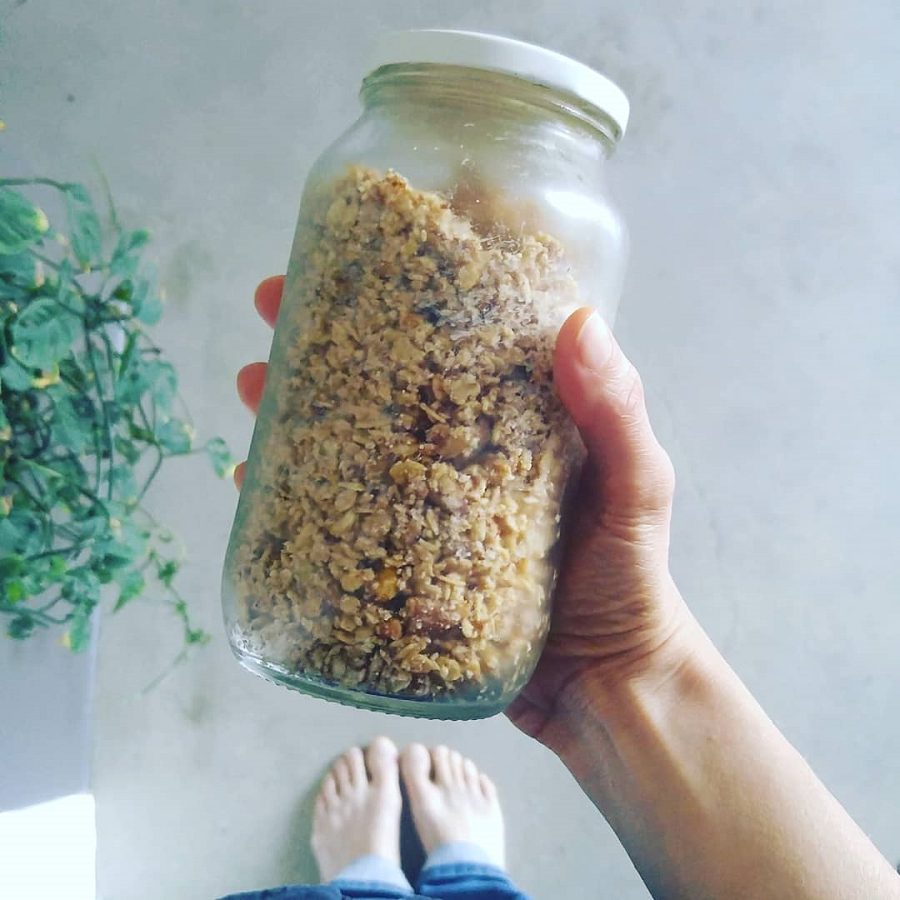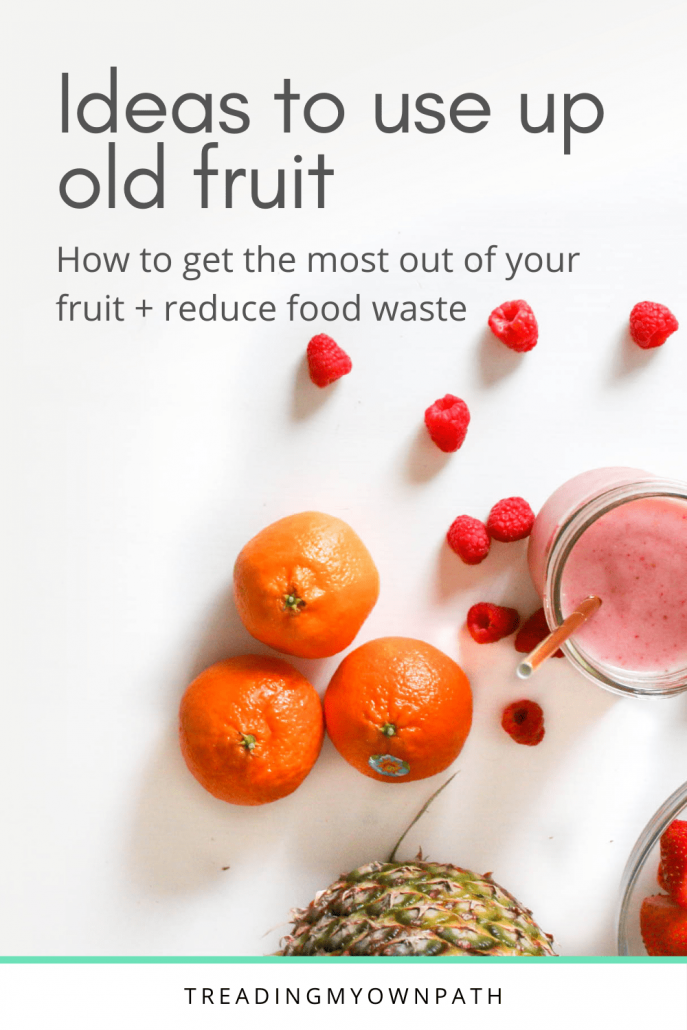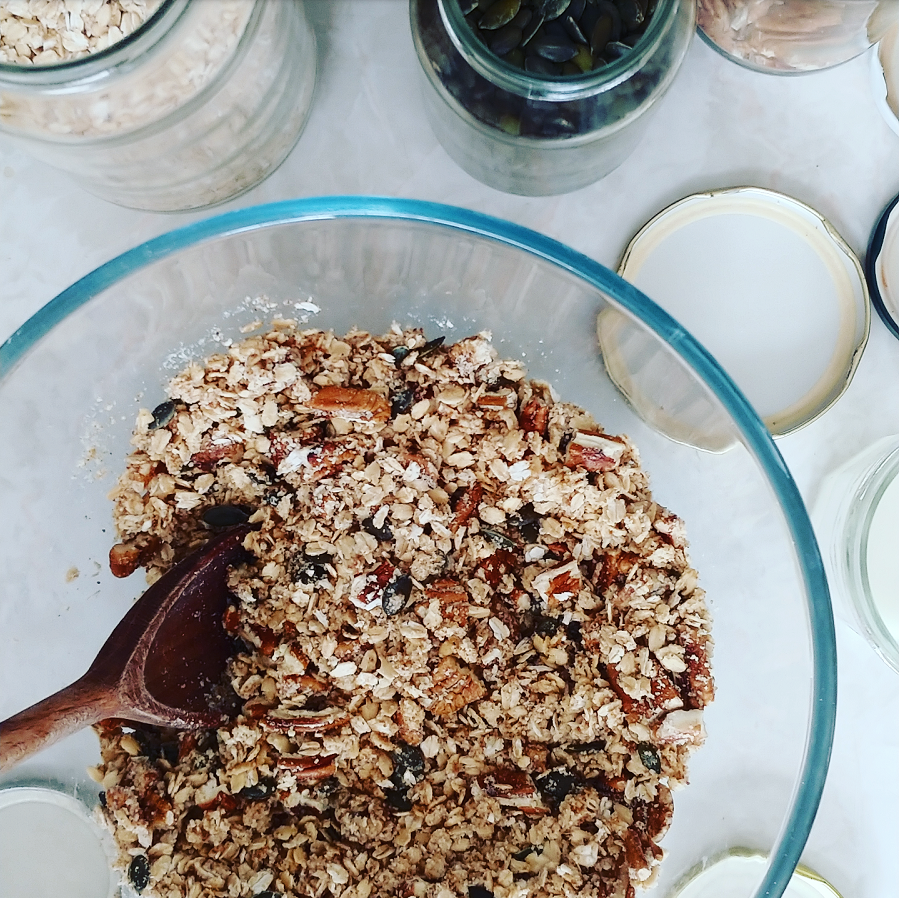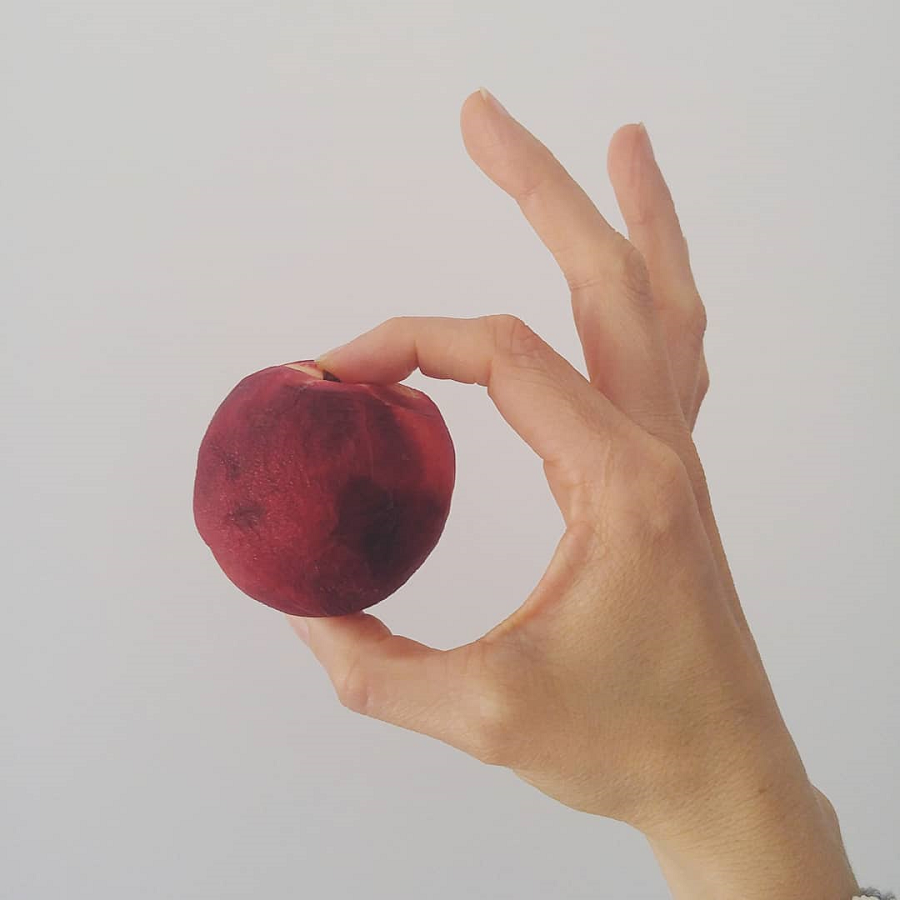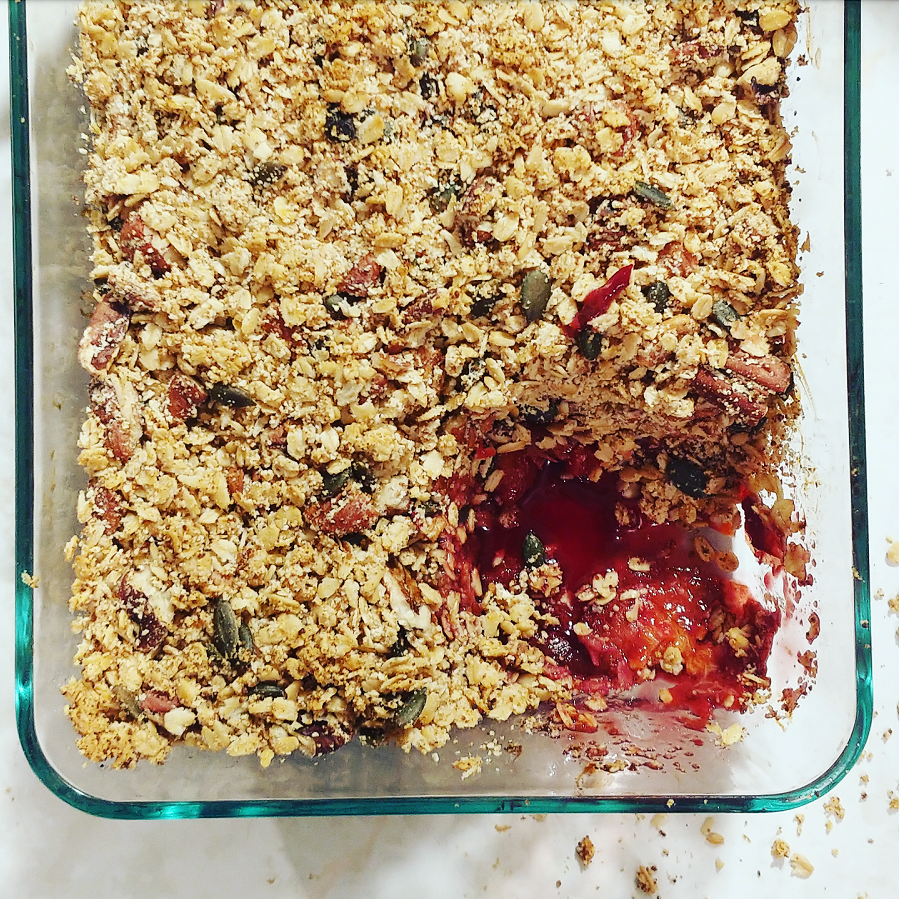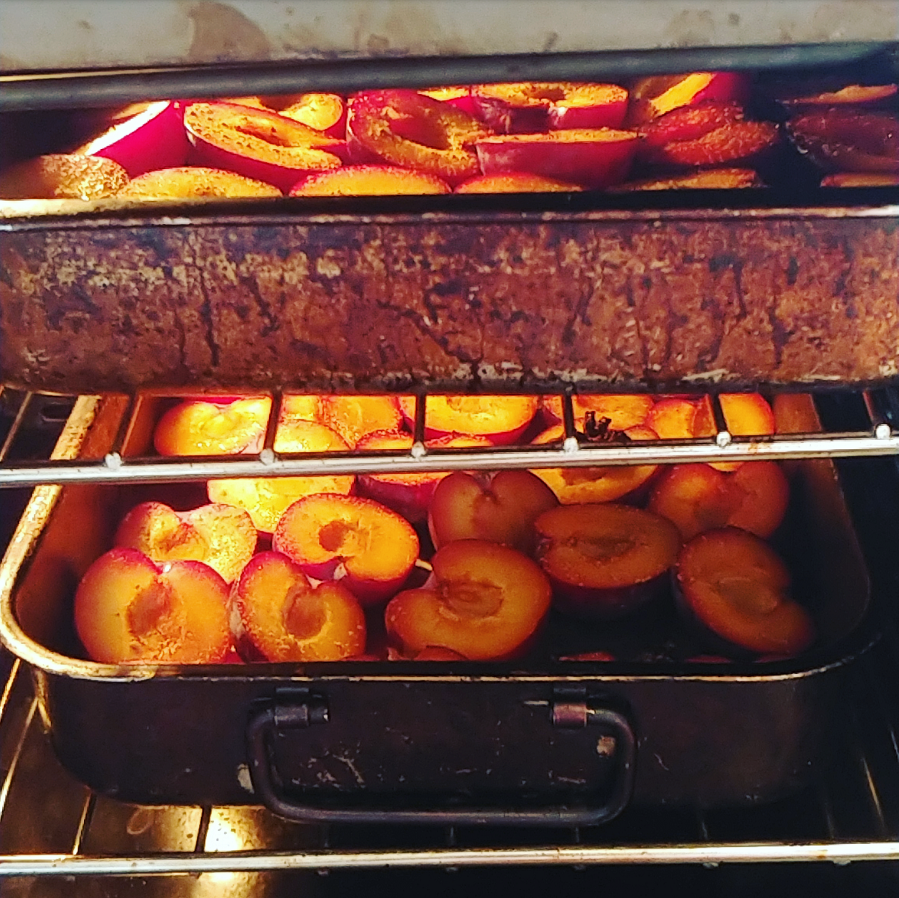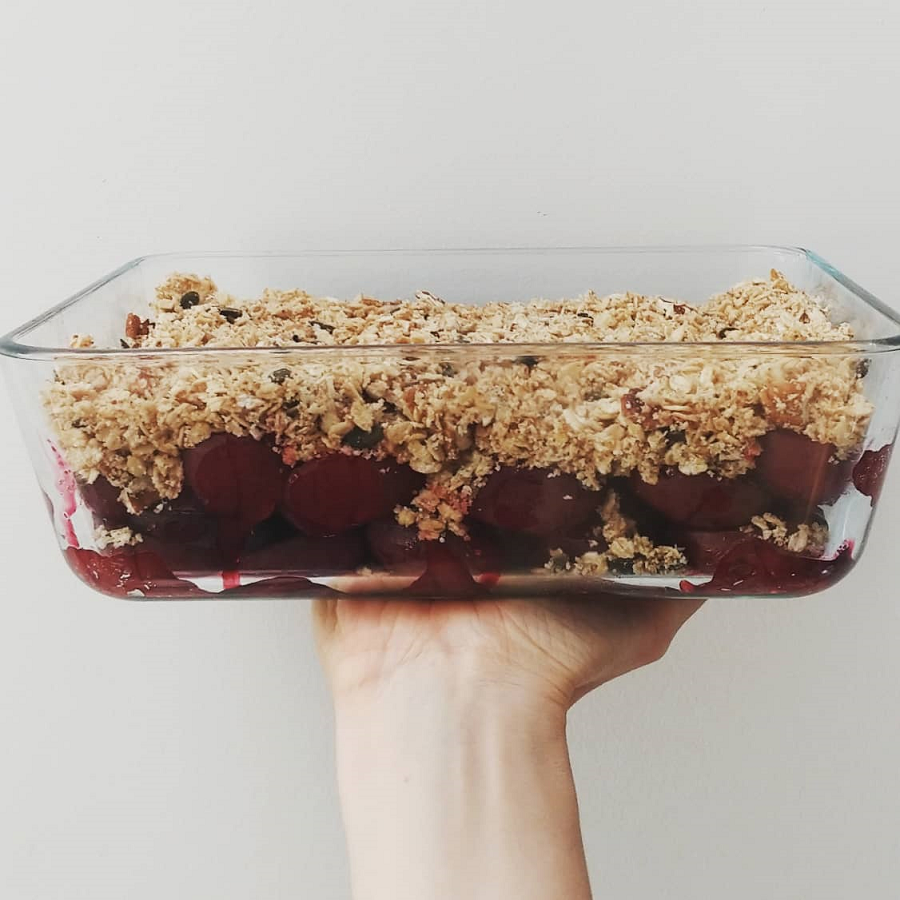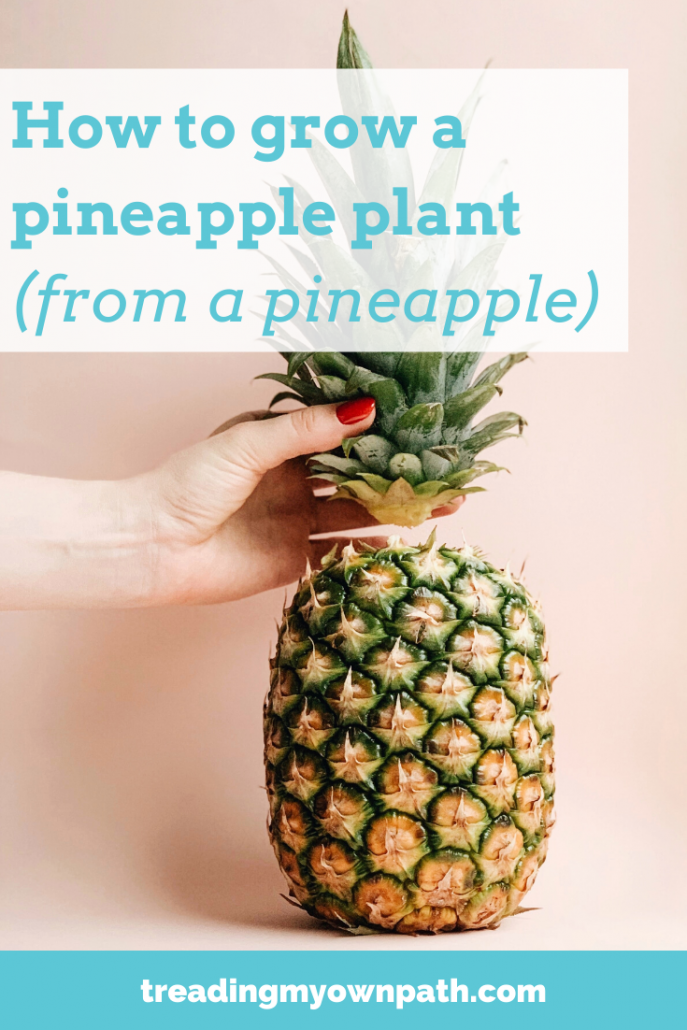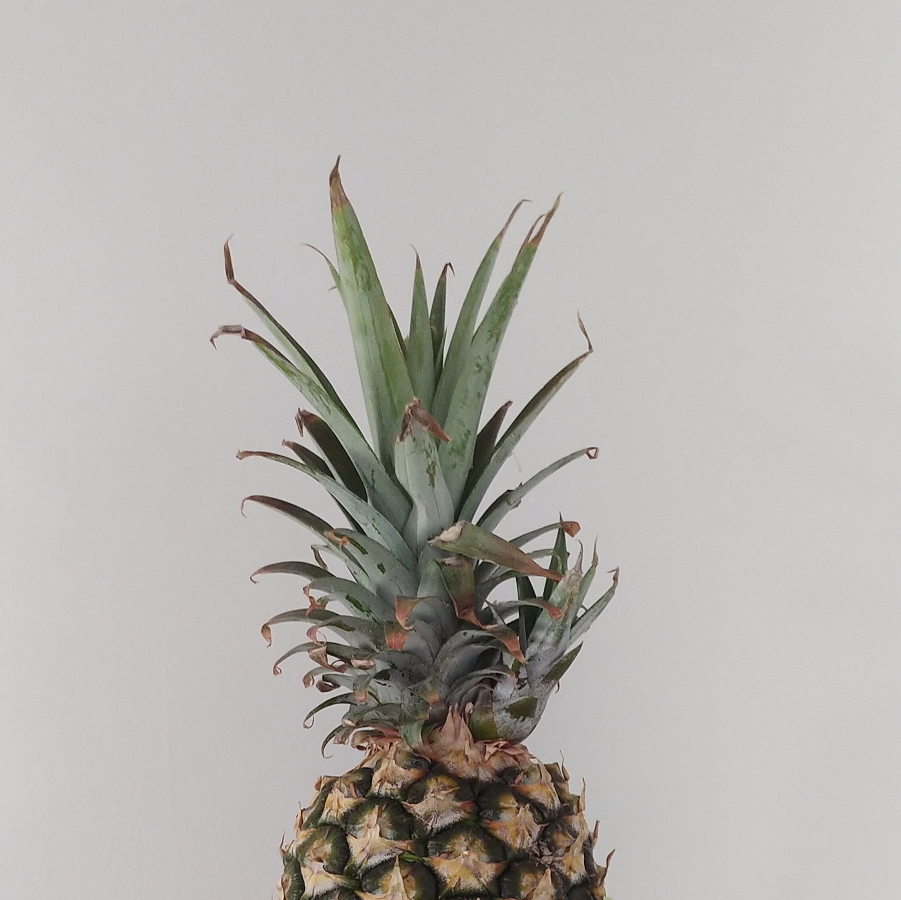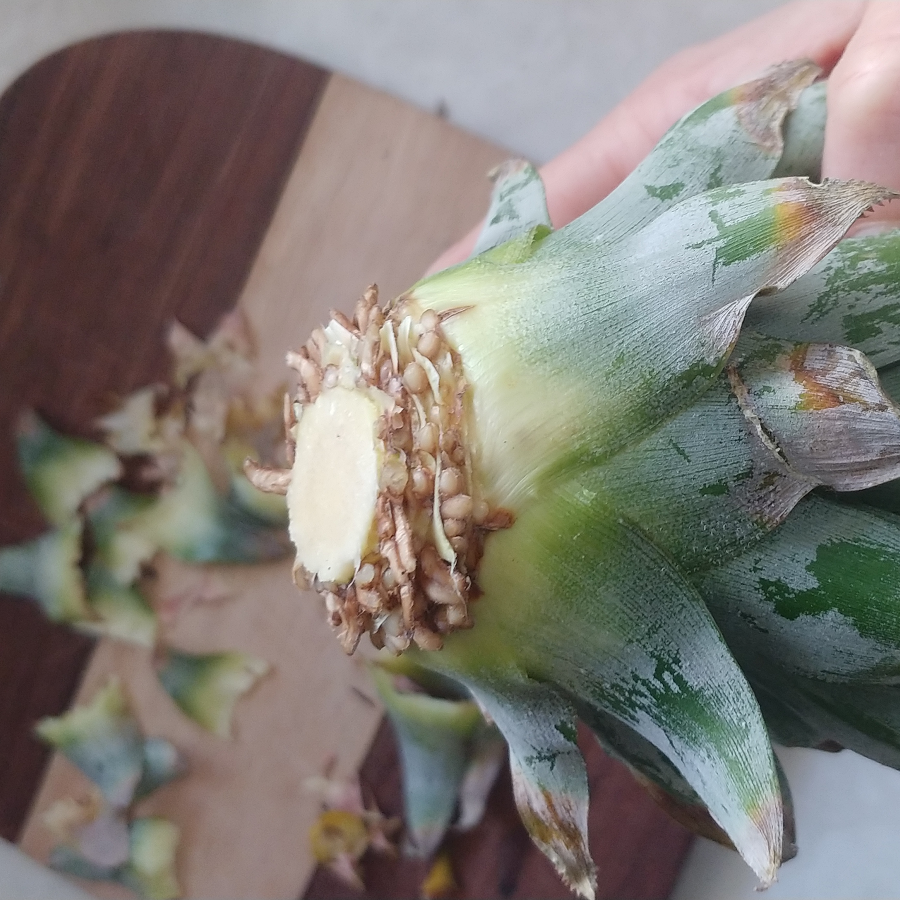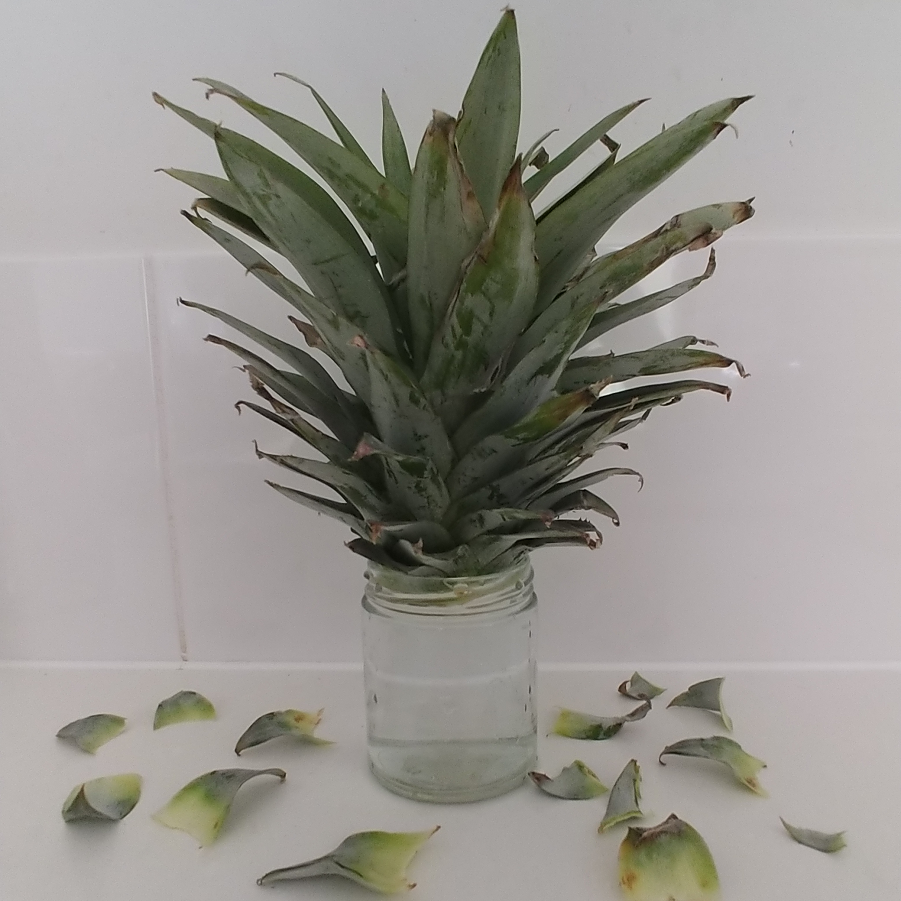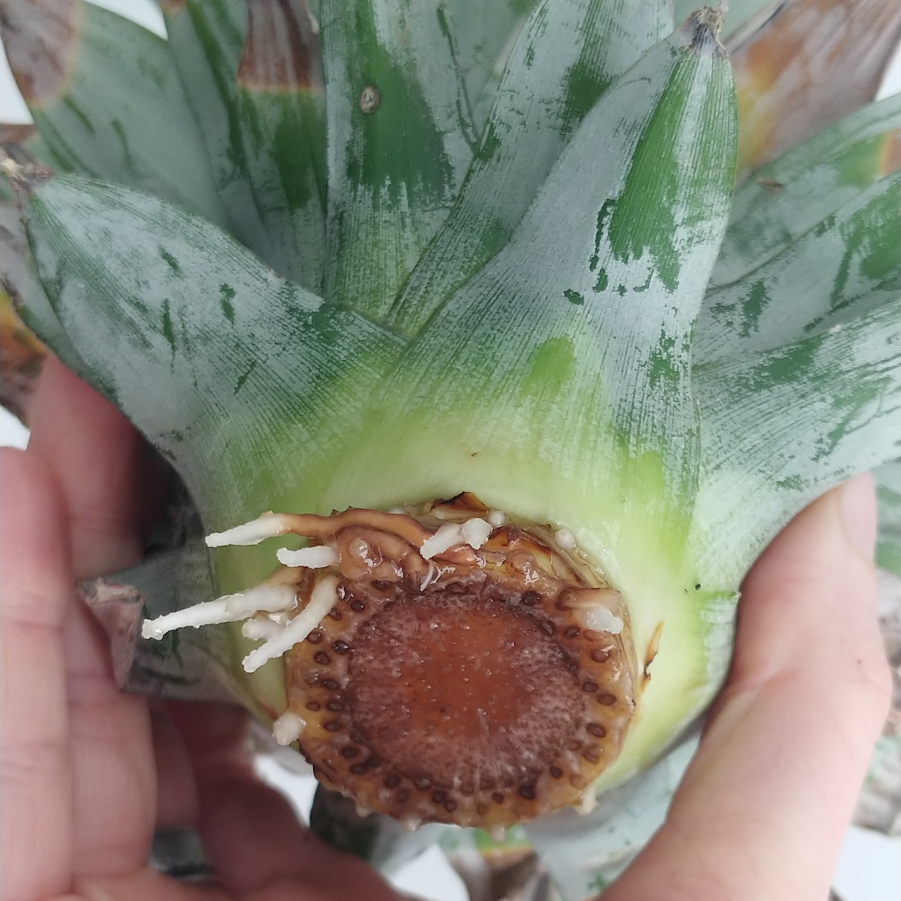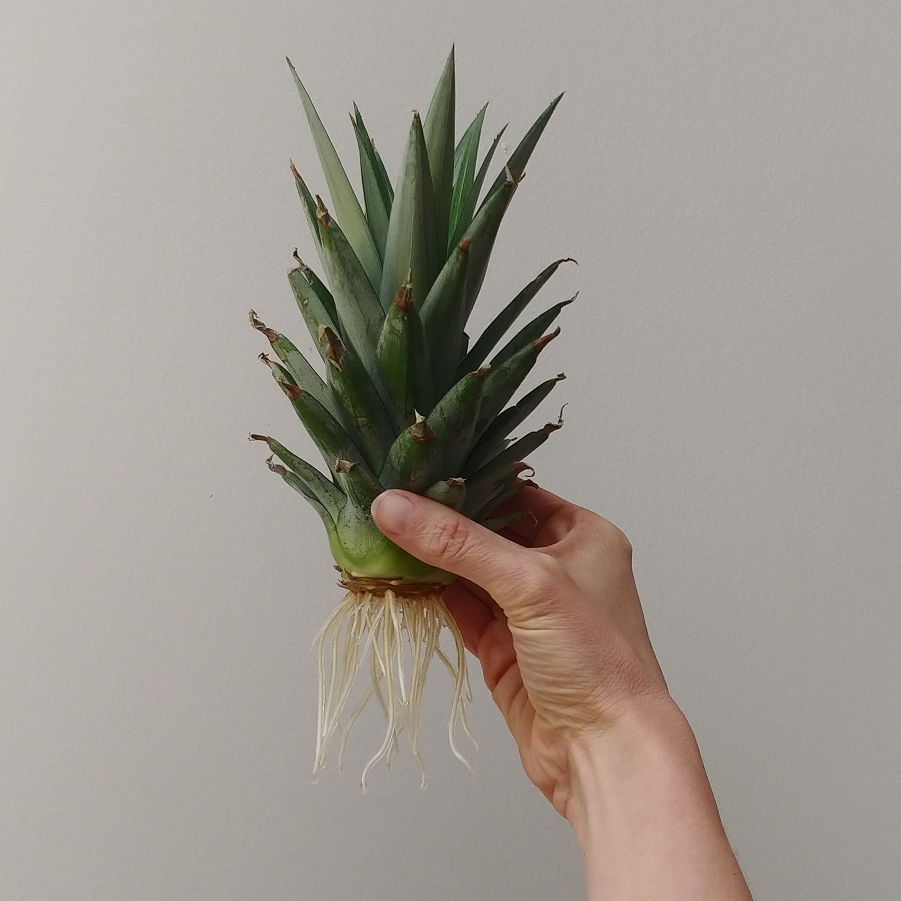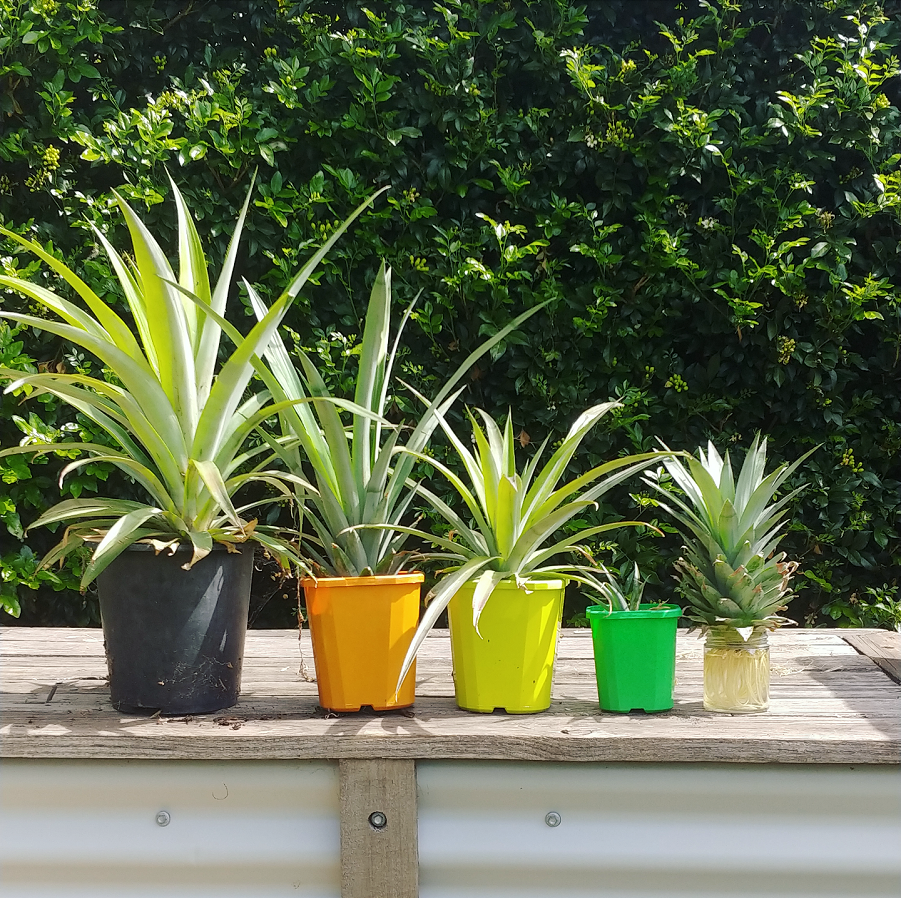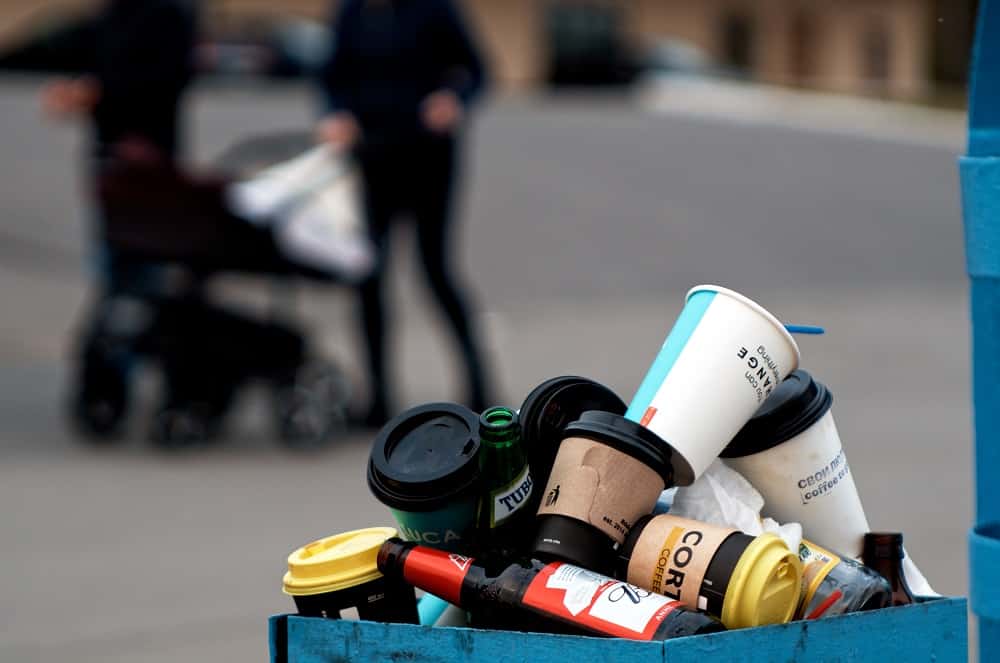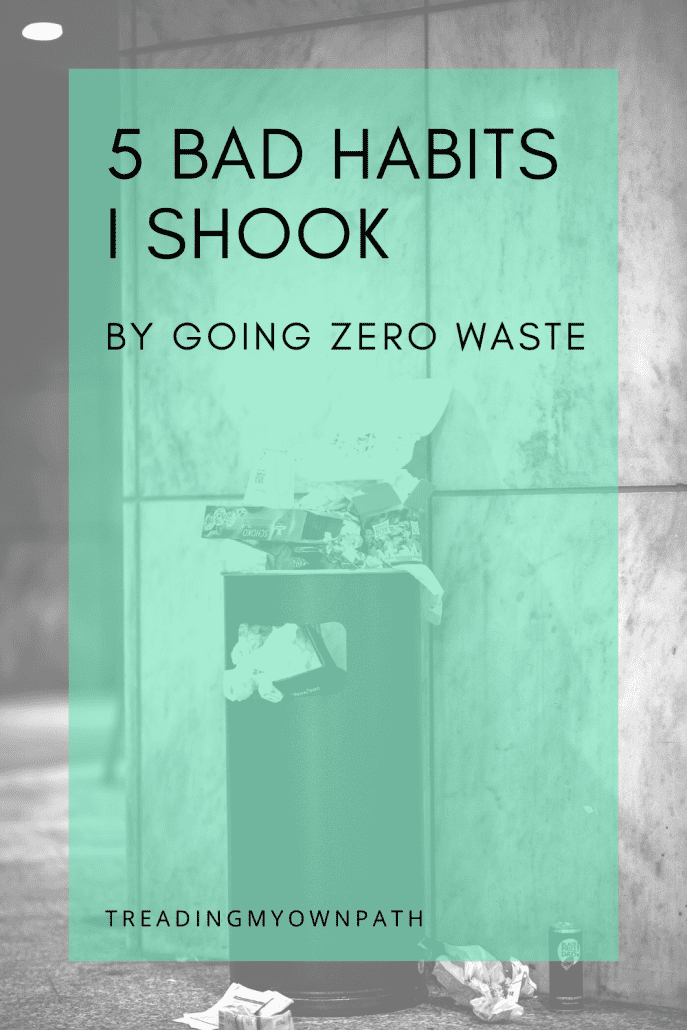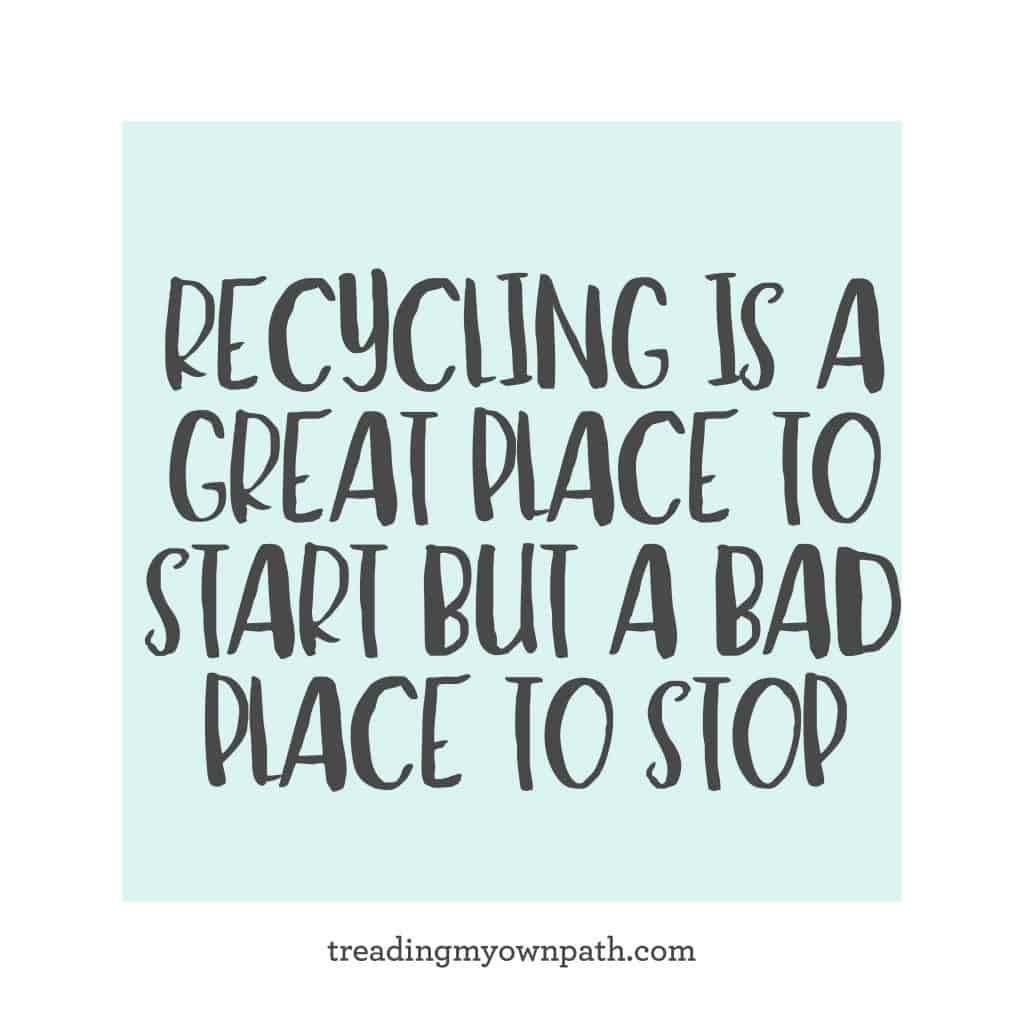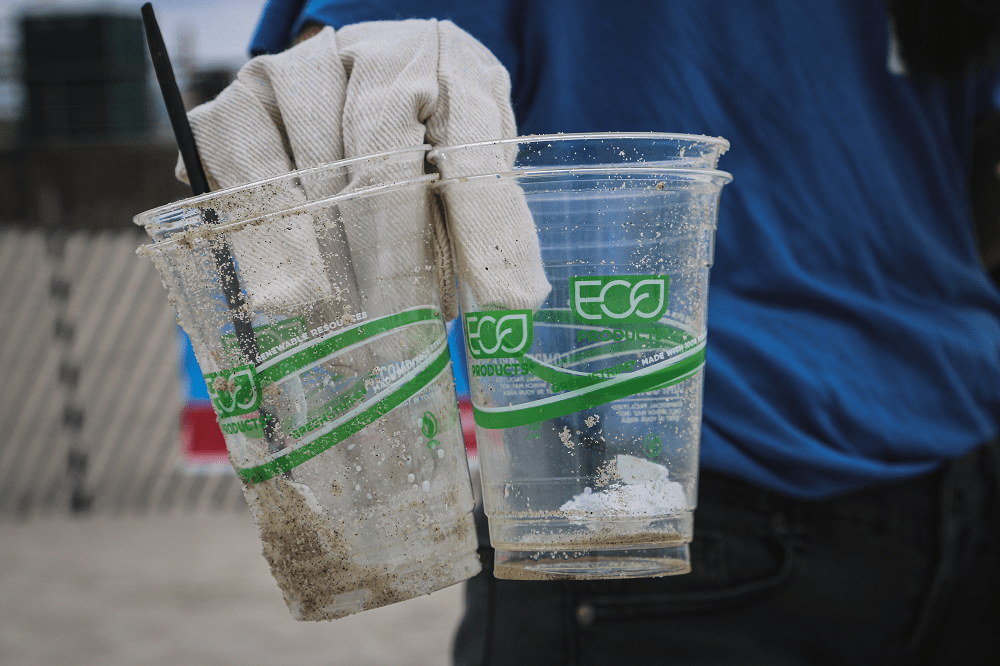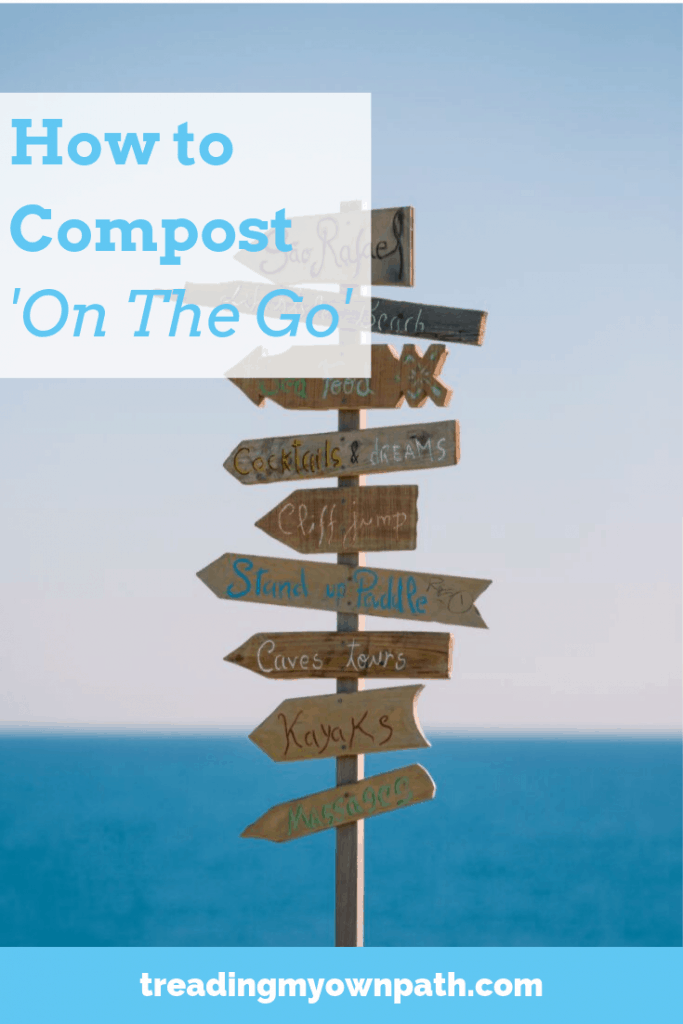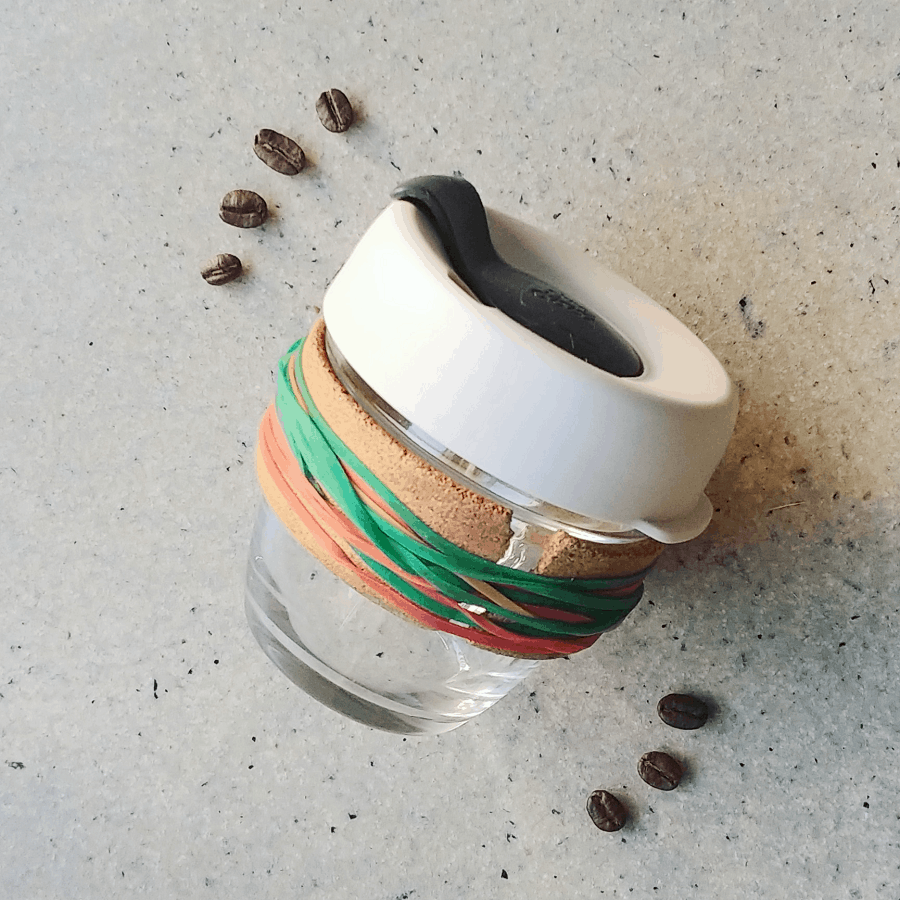How to start a Grow Free Cart (+ share surplus produce with your community)
A Grow Free cart is simply a cart (or a stand, or a table – any surface really) where home-grown produce, preserves, seeds and seedlings are placed and made available to anyone in the community. It’s the ultimate answer to “how can I share my surplus with my neighbours”, or on a more basics level, “what do I do with my courgette/zucchini glut?”
It’s one of a number of awesome neighbourhood community initiatives popping up all over the world. You’ve probably heard of the Little Free Library movement , which is the world’s largest book sharing movement. Books are placed in little free libraries all across the globe, and people are free to take them, and/or add new books.
The Grow Free movement is the fresh-fruit-and-vegetables version of the Little Free Library.
There’s also Little Free Pantries, which are the dry goods/long-life groceries version, and Community Fridges – sometimes called Solidarity Fridges or Freedges depending on where you are in the world.
All three movements help reduce food waste through sharing, and make good food more accessible to those who need it.
Being a vegetable grower, a Grow Free cart seemed like the best fit for me, with a suitable space on my front verge. A fridge requires power, which wouldn’t be easy for me to set up on the verge. There’s already a Community Pantry two streets away from me, so no need for another so close – plus a local church two streets away in the other direction runs a food bank that I make regular donations to (one of my 2021 resolutions).
You don’t have to be a vegetable grower to start one, of course, but it helps knowing that every week I will have things to put on the cart.
I’ll talk you through the steps to get started. If you’re interested in starting a pantry or fridge instead there will be some differences to your setup, but the process will be pretty similar.
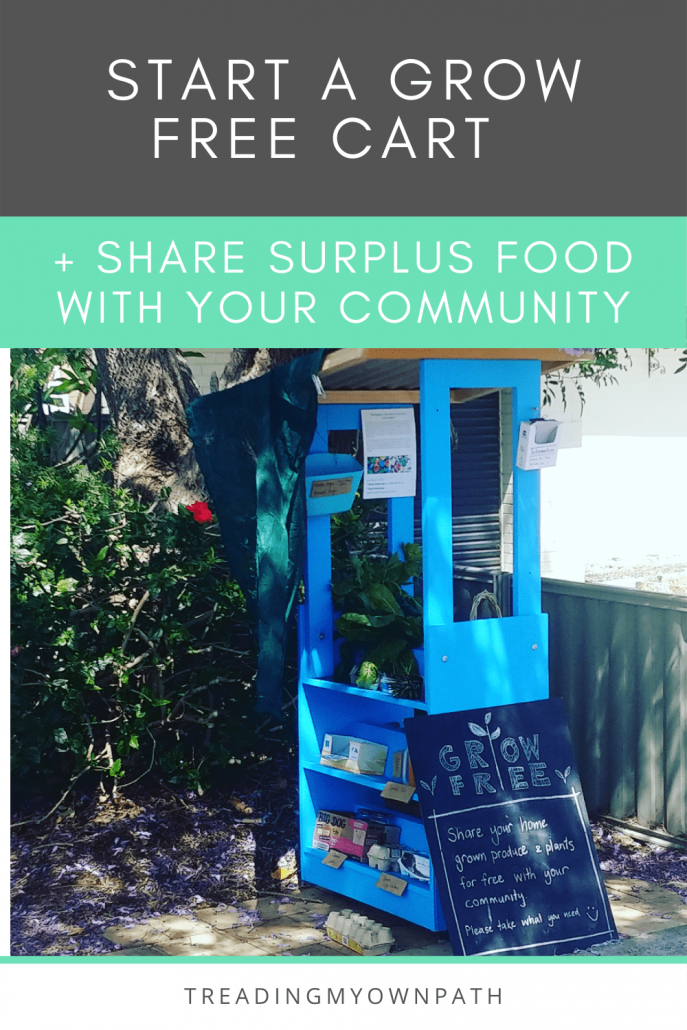
How to establish a successful Grow Free cart, in steps
Setting up a Grow Free Cart: what you need
The only thing you really need is a surface on which to place things, so any table or shelving will do. A lot of cart stewards (as people who have carts are called) use baby change tables, because they are a great size, have multiple shelves, tend to be on wheels for easy moving, and have sides to stop babies (and lemons!) rolling off the edge.
Some people go further and rig up a roof for their cart, to protect from the sun and rain, and even paint their carts in bright fun colours. This is the best one I’ve ever seen (in a neighbouring suburb, and how I first heard about Grow Free)…
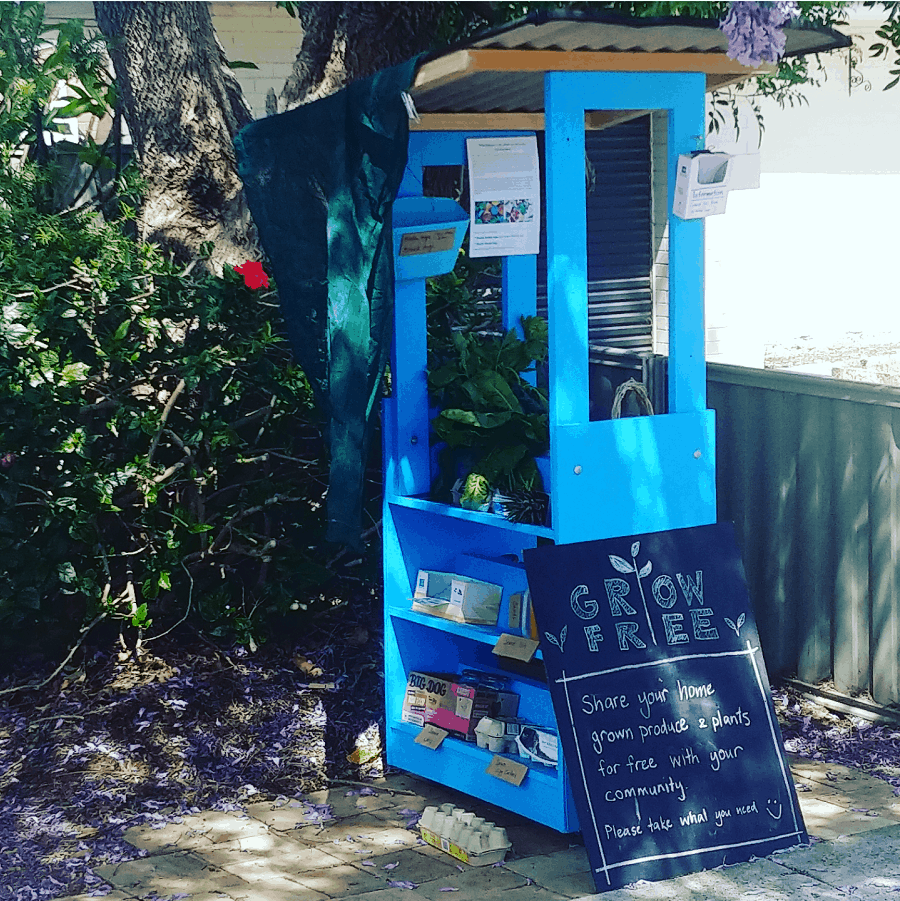
I’m positioning my cart under a tree, where it has shade, and the one weekend there was a downpour I relocated to underneath my garage door where it was protected from the rain.
I purchased a wooden baby change table second-hand for $15. I spent a long time trying to find a free one, but in the end I decided to pay for one that was exactly what I wanted. Two shelves as well as the top, and unpainted wood, on wheels.
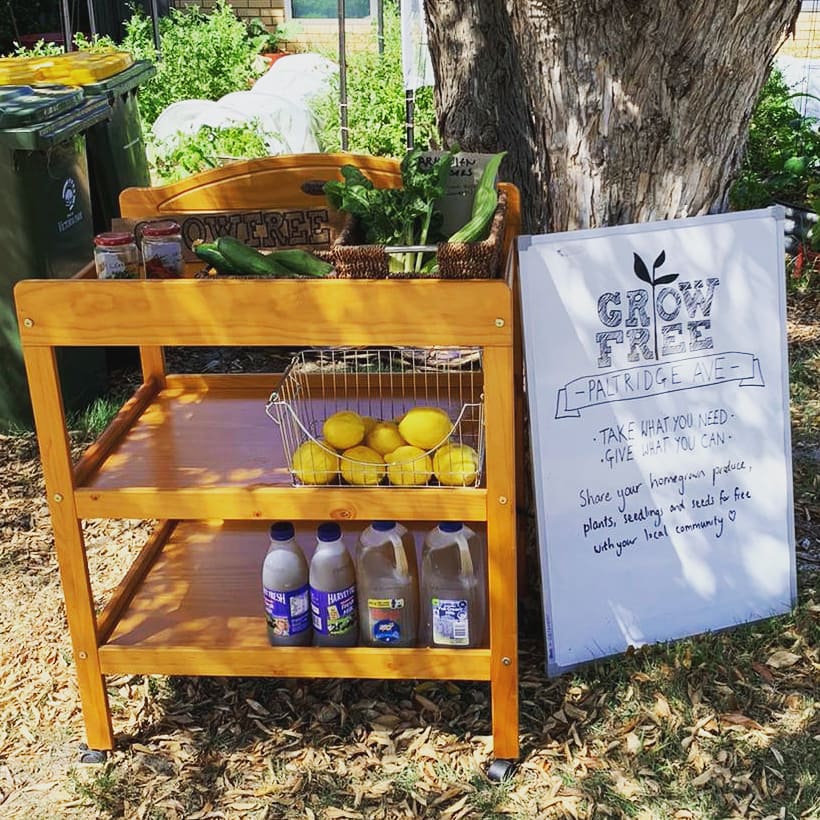
I’ve got a few different baskets that I picked up on the Buy Nothing website. I could use cardboard boxes, but I tend not to have them lying around.
I also got a whiteboard from Buy Nothing that I’ve use to make a sign, and I wrote on a piece of scrap wood for a second sign.
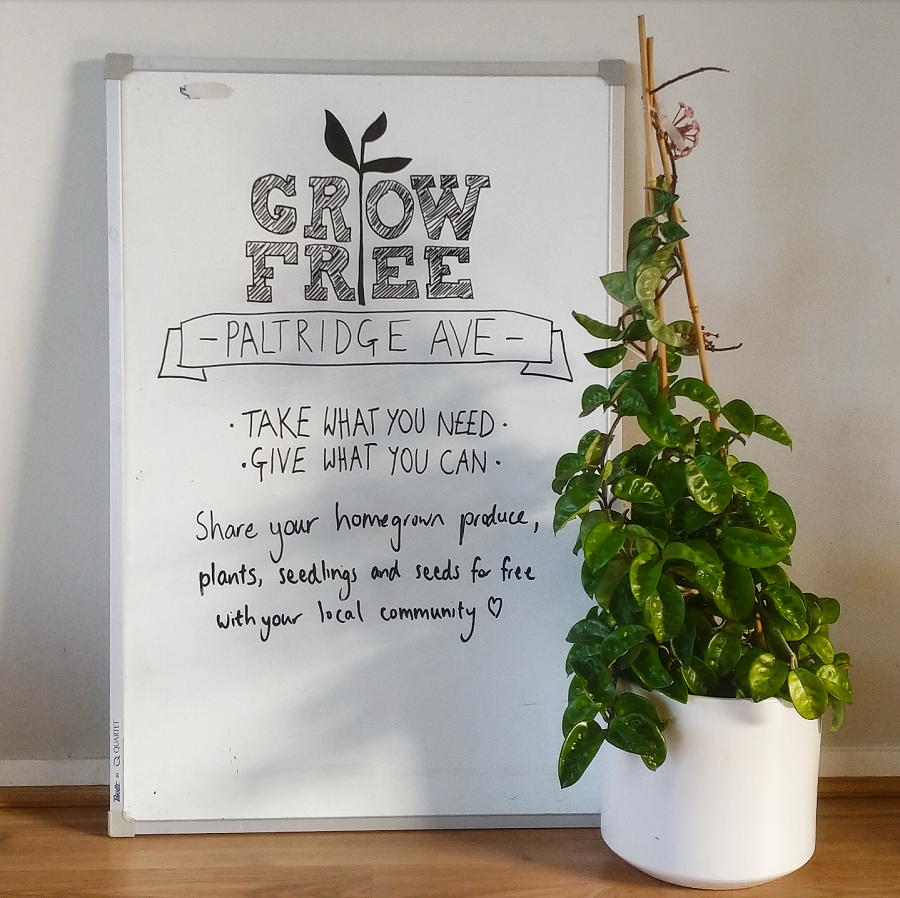
Other people use Eskies/cooler boxes to store more heat sensitive items. I don’t, but I would use a repurposed polystyrene box that chilled products often get delivered in, or track down an unwanted cooler box on Buy Nothing.
My total cost: $15.
Choose your opening hours.
Unlike little free pantries and community fridges, most carts have opening hours. This is because the produce is out in the open, exposed to the elements, and often quick-to-perish. Some are run by community centres, and so open Monday-Friday 9am – 5pm. Others (like mine) are run by people outside their homes. I decided to open my cart at weekends, for now.
It goes out on Saturday morning, and stays out until Sunday evening. Then it’s wheeled back inside until the following weekend.
Finding produce for the cart and people to share with.
Of course, for a successful cart you need fruits and vegetables! Seedlings, seeds and homemade produce are also permitted. My garden has a few things growing, and I chatted to my neighbour with a lemon tree beforehand to get some lemons.
But the best way to find surplus fruits and vegetables is to tell others what you’re doing! I posted to the Buy Nothing group and a local Grow Swap Share group (both on Facebook) in advance of the first outing to let people know what I was doing.
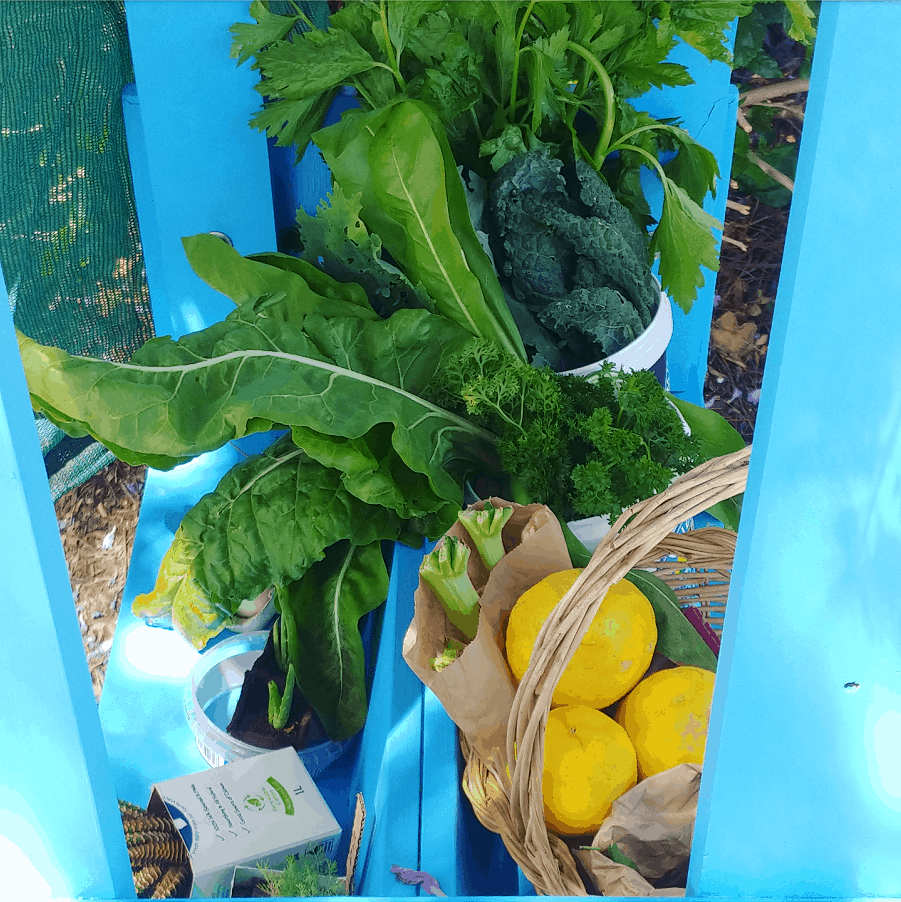
There’s also a directory on the Grow Free website which lists all the carts across the world. I emailed them as soon as I was ready, and added my cart. There’s a local Grow Free Western Australia facebook group too, which I use, but without a doubt my other community pages draw the most people.
(I chose to register my cart with Grow Free because I love the movement and what it stands for. Obviously I can give away vegetables to my neighbours with or without official permission of Grow Free, so there is no requirement to ‘join’, but there’s value in being part of a collection of like-minded people like this and helping spread the word. On their website, Grow Free have some great resources, downloadable flyers, a logo etc and it’s helpful to be able to refer new visitors interested in learning more here.)
Start before it’s perfect.
I took way too long to start my cart once I decided this I what I wanted to do. (Like, twelve months too long.) I was worried about finding the right cart. About whether I’d have enough stuff. That I’d end up with too much stuff and create food waste when I was trying to reduce it. That no-one would come. That everyone would come! That it wouldn’t look inviting.
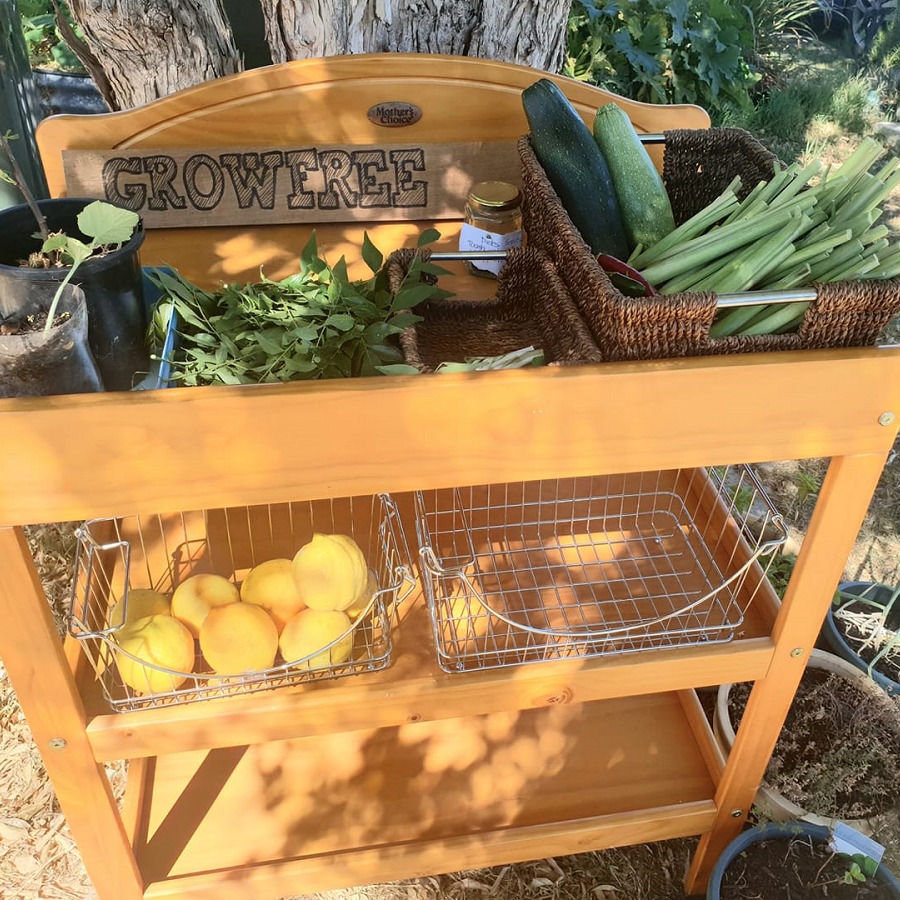
In the end, I just decided that I had to start. Best decision I made. Sure my cart isn’t beautiful or overflowing, but it’s growing each week and in time it will get to a place where I’m happy with it.
Promote, promote, promote.
For a long time before I started my own cart, I followed along on the Grow Free Western Australia Facebook page. And I noticed that the best carts were the ones that posted each week, saying they were open and sharing their offerings. And so I’ve done the same, and it’s been the best thing for getting people to the cart.
Even though it’s officially on the list as ‘open’ at the weekend, people need reminding. And mentioning what is on the cart also helps with visitors. (Tell people there are passionfruit, lemons and fresh figs and they are there!)
So every Saturday morning, once it’s out, I take a picture of the cart and post to the Buy Nothing group, Grow Free Western Australia group and sometimes the Grow Swap Share group, reminding people that the cart is ready for business and telling them what’s available.
Then on Sunday, I edit the post with an update as usually there’s a heap of different things by then. And people can message to check if stuff is still available before they swing by.
Posting every weekend is a bit tedious and part of me can’t be bothered, but I know it’s the single thing that gets people coming, so I grit my teeth and do it.
Dealing with surplus stuff.
At the end of the weekend, there’s usually a few bits and pieces left. Some things can be popped in my fridge until next week (fresh chillies and lemons will last a week). I usually let my immediate neighbours know if there’s anything left so they can come and take it. I haven’t needed to yet, but I can always post to Buy Nothing if there’s too much for me to use.
Setting yourself (as well as your cart) up for success.
Stewarding a cart isn’t a lot of work, but it isn’t no work, either. I have to put it out each weekend, set it up (which means raiding the garden beforehand for things to share), post about it, and then pack it all away at the end of the day – and then repeat the next day.
I started mine in the hottest month of the year, which meant I had to check back often to top things up (rather than just putting out everything at the start of the day and being done with it).
If this sounds like too much work for you, a Little Free Pantry might be a better often, as they are much more ‘set and forget’.
If you decide to set up a cart, consistency is important for success. I’ve committed to weekends, and so I’m making sure that the cart goes out and that I post about it, every weekend. That way people know to drop things off, they know to come and take what they need. And I can decide if it’s too much work, or if I’d like to do more.
There’s no reason why a cart couldn’t be seasonal (from May – September only, for example) or even just once a month.
(Originally I’d thought about doing a midweek day too, but having been going for about 6 weeks now, I’ve found the weekend is more than enough for me.)
I don’t specifically commit to a time, so I don’t have to drag myself out of bed in order to meet a deadline – I just post when it’s ready. That works better for me.
Why set up a Grow Free cart in your neighbourhood?
Really, the answer is, why not?
It’s a great way to share excess produce with neighbours, meet new people, connect with our local community, reduce food waste, and feel good about taking some kind of positive action in a stressful world.
Now I’d love to hear from you! Have you heard of Little Free Pantries, Grow Free carts or Solidarity fridges before? Is there one in your area? Have you set one up, or are you thinking of doing so? Any questions about getting started? Anything else to add? Please share your thought in the comments below!
[leadpages_leadbox leadbox_id=123a865e9839c5] [/leadpages_leadbox]

